- Connected Learning
- Field Studies
- Learner as Researcher
- Mesh Networks
- Connected Classrooms

Explore | The GEMS World Academy Blog
The link between art education and critical thinking.
August 7, 2017 admin Education , GEMS World Academy Chicago , Critical Thinking , Cognitive Development , Private School , Art Education , Empathy
Why study art in school?
The question has asked been repeatedly over the years, often igniting passionate debate. One reason the question comes up is because the outcomes of art education are not easily measured on standardized tests and other assessments — unlike, for example, achievements in math, science and reading.
But research shows that art education builds many of the cognitive skills that are in high demand in the business and professional worlds, skills like critical thinking and creative problem-solving.
At GEMS World Academy Chicago, a leading independent private school, art is both a stand-alone academic subject and a way of thinking that is threaded throughout its International Baccalaureate curriculum. GEMS uses art to help students see the world from multiple angles, and to take a design-thinking approach to solving problems. GEMS also incorporates art into its STEM inquiries (science, technology, engineering and math), creating an integrated program of study often referred to as STEAM.
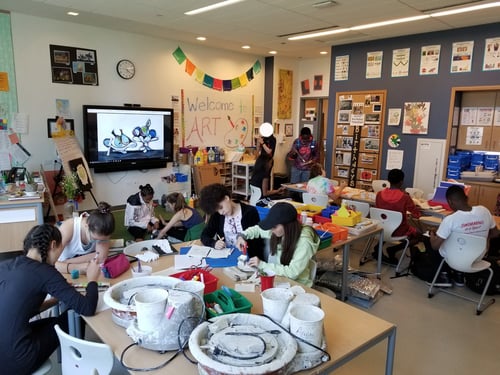
Jay Greene, a professor of education reform at the University of Arkansas at Fayetteville, has overseen multiple studies of the impact that study of the arts has on students' cognitive and intellectual skills. One of the studies involved a student trip to an art museum, and another involved attendance at a live theater event. In both cases, Greene and his collaborators found that a focused learning experience with art boosts critical-thinking skills, as it encourages students to observe the world more carefully.
Careful, deliberate observation, sometimes referred to as "slow looking," is a central component of Artful Thinking , a recent project led by researchers at Harvard University's Project Zero. Artful Thinking illustrates how and why teachers should make an effort to create connections between art and the larger curriculum. As stated on the Artful Thinking website: " Works of art provoke rich, multilayered meaning-making in ways unlike other disciplines. They raise questions, evoke connection-making, and in many ways transform the shape of inquiry."

Students at GEMS World Academy Chicago engage with art in a variety of ways. They study existing works in the field by visiting cultural institutions like the Art Institute of Chicago and the Museum of Contemporary Art. They create their own works by drawing, sculpting, coding, taking photographs, painting and more. And they use art in design, humanities and science classes to view concepts in new ways.
GEMS leaders make that commitment to art education because they know an elite private school must do more than simply prepare students to achieve high test scores. Art is part of GEMS' efforts to produce the transformative global leaders of tomorrow.

Would you like to share your thoughts?
Subscribe to email updates, popular posts, posts by topic.
- GEMS World Academy Chicago (75)
- Education (35)
- Innovation (28)
- International Baccalaureate (17)
- Child Development (16)
- Technology (14)
- Field Studies (12)
- Upper School (12)
- High School (11)
- Private School (11)
- Literacy (10)
- academics (10)
- Global Citizenship (8)
- Middle School (8)
- Parenting (8)
- GEMSinnovation (7)
- Parent Resources (7)
- Critical Thinking (6)
- field study (6)
- gems world academy (6)
- Building Bigger Dreams (5)
- Connected and Blended Learning (5)
- GEMS Faculty, (5)
- Information (5)
- International perspective (5)
- Libraries (5)
- connected learning (5)
- mlearning (5)
- Community Innovators (4)
- Early Childhood (4)
- Inquiry (4)
- Learning (4)
- Learning Spaces (4)
- Parent Community (4)
- Reading (4)
- World of Innovation (4)
- Collaboration (3)
- Communication (3)
- Creativity (3)
- Cultures (3)
- Holidays (3)
- Mathematics (3)
- Problem Solving (3)
- Science (3)
- Student-Centered Learning (3)
- World As Our Campus (3)
- family activities (3)
- research (3)
- teachers (3)
- translocal (3)
- Change Agent (2)
- Cognitive Development (2)
- College (2)
- Cultural Exchange (2)
- Curriculum (2)
- Elementary School (2)
- Empathy (2)
- Entrepreneurship (2)
- GEMS Education (2)
- GWAConnect (2)
- Global awareness (2)
- History (2)
- Leadership (2)
- Makerspace (2)
- Mobile Learning (2)
- Preschool (2)
- Risk-Taking (2)
- Robotics (2)
- Social and Emotional Learning (2)
- Strategic Thinking (2)
- Teachers Matter (2)
- Teenagers (2)
- Whole Child (2)
- Young Learners (2)
- admissions, (2)
- american academy of pediatrics (2)
- celebrations (2)
- paper53 (2)
- Abstract Concepts (1)
- Accessibility (1)
- Adversity (1)
- Art Education (1)
- Assessment (1)
- Athletics (1)
- Banned Books Week (1)
- Baseball (1)
- CREATE Lab (1)
- Carnegie Mellon University (1)
- Citizenship (1)
- City as classroom (1)
- College Counseling (1)
- Curriculum Standards (1)
- Engagement (1)
- Extracurricular Activities (1)
- Faculty (1)
- Failure (1)
- Gift Ideas (1)
- Global Leadership (1)
- Growth Mindset (1)
- Humanities (1)
- Kyle Hill (1)
- Liberal Arts (1)
- Mentorship (1)
- Multiculturalism (1)
- Online Content (1)
- Outernet (1)
- Peer Feedback (1)
- Physical Education (1)
- Pop Culture (1)
- Power of Inquiry (1)
- Primary Years Program (1)
- Procrastination (1)
- Progression of knowledge (1)
- Propaganda (1)
- Research Skills (1)
- School as Connected Hub of Learning (1)
- Self-Expression (1)
- Service (1)
- Service Learning (1)
- Social Impact (1)
- Soft Skills (1)
- Student Reflection (1)
- Study Habits (1)
- Summer Vacation (1)
- Taking Action (1)
- Thanksgiving (1)
- Theater (1)
- Transdisciplinary (1)
- Visual Learning (1)
- World Leaders in Education (1)
- Writing (1)
- adolescence (1)
- around the world (1)
- capstone (1)
- chicago (1)
- chicago children's theatre (1)
- chinese american museum (1)
- design and innovation lab (1)
- experiential education (1)
- fencing (1)
- gaming, (1)
- let's move (1)
- lincoln park zoo (1)
- professional learning (1)
- swimming (1)
- taekwando (1)
- techweek, (1)
- traditions (1)
- valentine's day (1)
GET IN TOUCH

Arts Academy
in the Woods
How Art Education Fosters Critical Thinking and Why It Matters

These days, the ability to grasp the logical connection between ideas is a necessary skill.
Unless you’re a hermit living in a cave, there is so much information coming at all of us at any given moment.
Being able to discern which information is of worth – and which is not based in reality – requires critical thinking.
So What Exactly Is Critical Thinking?
Critical thinking is often synonymous with reflective and independent thinking. It means knowing how to take in the data and then come to a reasonable conclusion.
Those who engage in critical thinking are constantly questioning ideas and assumptions rather than just accepting what’s being peddled to the masses.
Critical thinkers want to know that the incoming information is representative of the bigger picture. If they determine that it’s not, they’ll take the necessary measures to get that additional information.
Critical Thinking Versus Being Critical
Critical thinking is not the same thing as being argumentative or critical/judgmental of other people. Sure, critical thinking can expose errors or poor reasoning.
But it’s also crucial for cooperative reasoning and then moving toward constructive tasks. Because acquiring more knowledge improves and strengthens one’s theories and arguments. And this subsequently leads to enhanced work processes.
How Art Improves Critical Thinking
Because critical thinking tends to incorporate logical and rational thinking and veers from instinct, many people see it as a hinderance to creativity.
After all, creativity requires breaking the rules, right? (Well, yes and no .)
Still, critical thinking truly requires out-of-the-box thinking. Rather than just taking popular approaches and swallowing them whole, critical thinkers challenge the consensus. This means they often have to pursue less popular thoughts or approaches.
So if you think about, critical thinking is an absolutely necessary component of creativity. Without it, how can the creative person continue to evaluate and improve upon his or her ideas?

It’s this very process of observation and study that teaches students of the arts to more intensely observe and analyze the world. And it gives them the skills that build the foundation of critical thinking.
But Why Does It Matter?
You might think that if your path leads you to work in research, law, education, management, finance or medicine, then you’ll absolutely need this skill. And you’re right.
But no matter what you choose to do with your life, the ability to think clearly and rationally is important.
Knowing how to receive information, clearly consider it and then use it to systematically solve problems is an asset for any career. Especially in light of this new knowledge economy. To be successful in such an economy requires one to able to handle changes quickly and effectively.
There is an increased demand for workers to be able to analyze a lot of information from diverse sources, then integrate it in order to find solutions. Critical thinking promotes these skills.
It also enhances language and presentation skills. The simple act of learning to think in a more systematic and logical fashion can also improve the way one expresses ideas.
Furthermore, in having to analyze the structure of different information sources, critical thinking also improves one’s ability to comprehend.
And as we mentioned above, critical thinking actually promotes creativity. Coming up with creative solutions is more than just having new ideas. There has to be an understanding that the new ideas are useful and relevant to the required task. Critical thinking plays an important role in this.

That’s right. Critical thinking is even important for this. It’s nearly impossible to structure a meaningful life without the ability to justify and reflect on our own values and decisions. And critical thinking provides the tools for this process.
So yeah, it’s safe to say that critical thinking definitely matters.
Learning Critical Thinking with an Arts Integration Education
Arts integration education merges the important skill of critical thinking achieved through art education and blends it in with academics.
There’s no disputing the importance of STEM. The above mentioned knowledge economy requires students to understand facets of science, technology, engineering and math.
With arts integration though, there’s the added importance of art – hence the term STEAM. Arts integration isn’t looking to bypass STEM. It strives instead to create an integrated program that includes all of those, while teaching the application of skills learned through the arts – such as critical thinking.
Arts integration helps students see the world from multiple angles, and to take a design-thinking approach in finding solutions.
Teaching young people to be careful and deliberate observers can go miles toward expanding their worldview. And this, in turn, can create a stronger democracy.
Do You Want to Explore An Arts Integration Education?

So take a look at what our students have to say . And/or request a tour of our school and see what we have to offer.
Then get ready to put those critical thinking skills toward a higher purpose.
News Categories
- Art Integrated Education
- Daily Announcements
What is Art Education: Exploring its Purpose and Impact
Time to Read:
What is Art Education
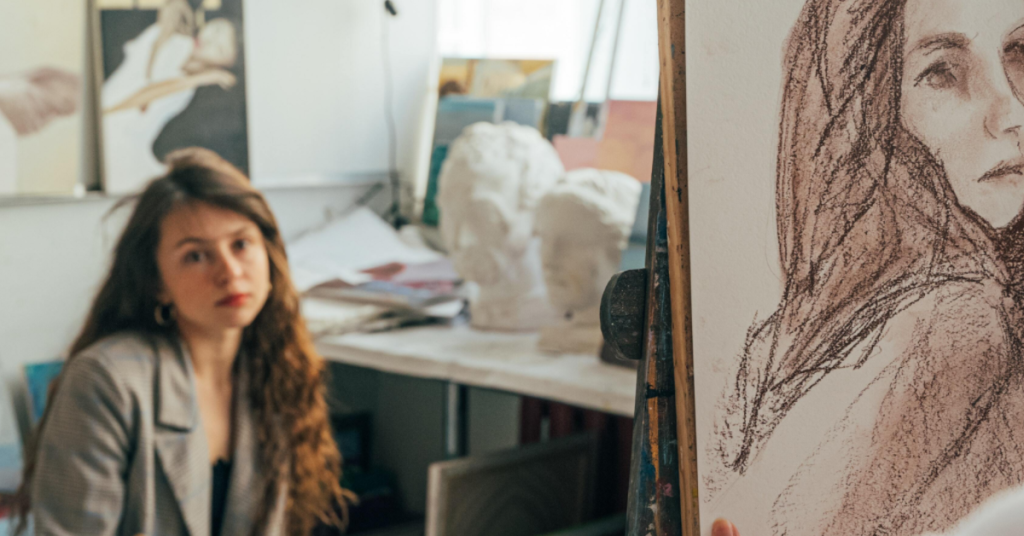
Are you curious about the power of art education? Have you ever wondered why it’s so important to have art in the classroom?
In this article, we will explore what is art education. From its benefits on individual growth and development to its ability to prepare students for life and work, we will dive into the fascinating world of art education .
Join us on this journey as we discover the true value of art education and how it can make a difference in students’ lives everywhere. Get ready to be inspired and amazed!
Key Takeaways
- Art education covers a wide range of visual and performing arts disciplines.
- The main goal is to teach students the creation, production, and appreciation of various art forms.
- Art education promotes creativity, critical thinking, and problem-solving skills.
Table of contents
The Disciplines in Art Education
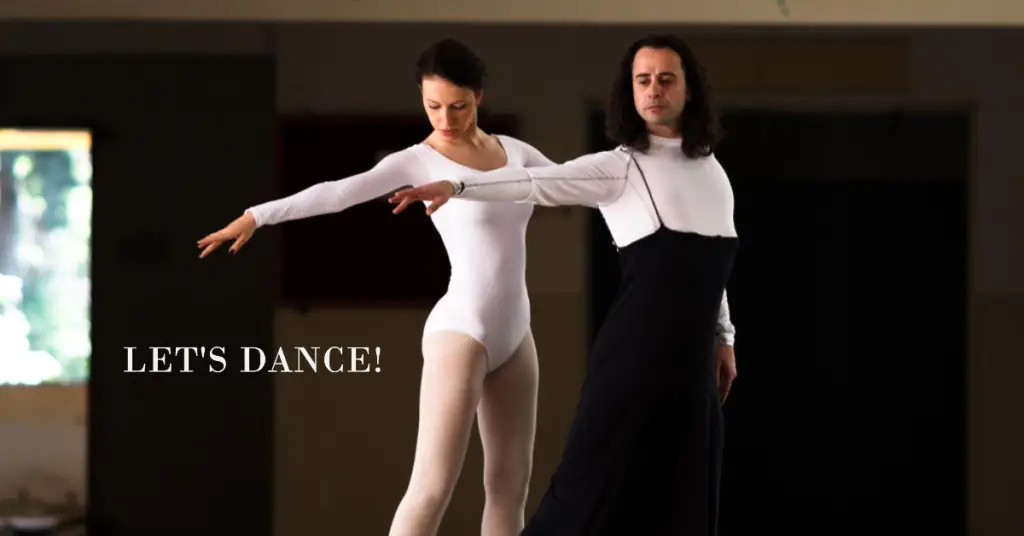
Art education encompasses a variety of disciplines that involve learning, instruction, and programming based on visual and tangible arts.
It includes performing arts such as dance, music, theatre, and visual arts like drawing, painting, sculpture, and design.
Art education aims to teach students how to create, produce, and appreciate various art forms, as well as to understand and evaluate the work of others.
Through art education, students are exposed to diverse artistic practices, where they can develop their creativity, critical thinking, and problem-solving skills.
Furthermore, it provides opportunities to explore cultural heritage and appreciate the importance of creativity in society.
Integrating arts into education allows learners to express themselves and discover their talents.
Understanding Art Education
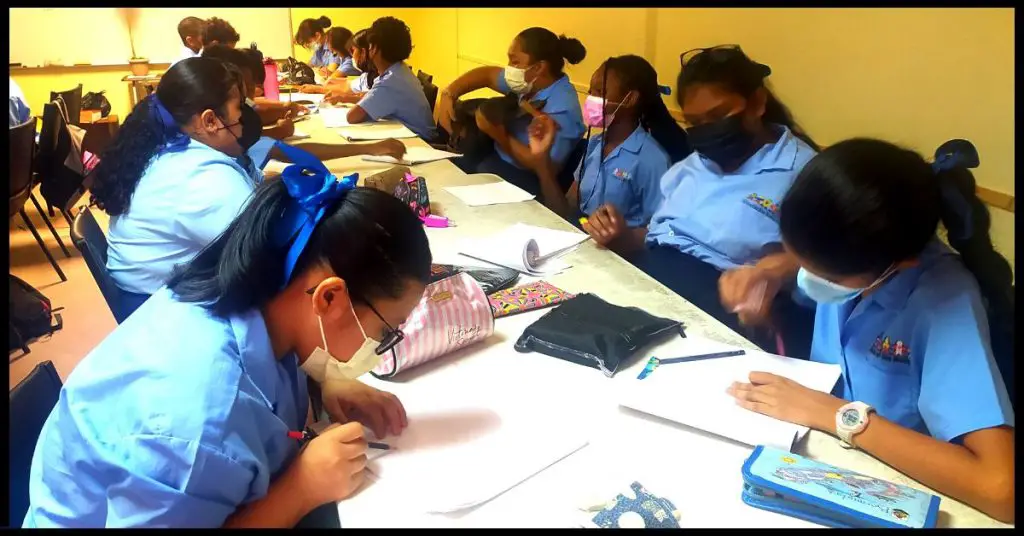
Art education is a vital educational experience that fosters creativity and artistic expression and offers various cognitive and emotional benefits.
It prepares students for the challenges in life by enhancing their problem-solving skills, visual-spatial abilities, and collaboration capabilities.
Incorporating arts in education allows you to explore your creative potential while providing a foundation for understanding various art forms.
Whether it is music, dance, visual arts, or theatre, arts education is crucial in broadening your perspective and nurturing your imagination.
As you delve deeper into the art world, you will learn that it is a powerful medium to express emotions, thoughts, and ideas, transcending cultural and linguistic barriers.
The essence of arts learning lies in its ability to facilitate the acquisition of artistic skills and instil a sense of appreciation for diverse art forms.
This helps you better understand various cultures, traditions, and histories, fostering empathy and respect for others.
Moreover, exploring, creating, and appreciating art can be therapeutic, enabling you to manage stress and emotional turmoil effectively.
To sum up, understanding art education is vital for holistic personal growth, encompassing cognitive, emotional, and social development.
So, embrace the world of arts, experience art education’s benefits , and appreciate the richness it brings to your life.
Importance of Art Education
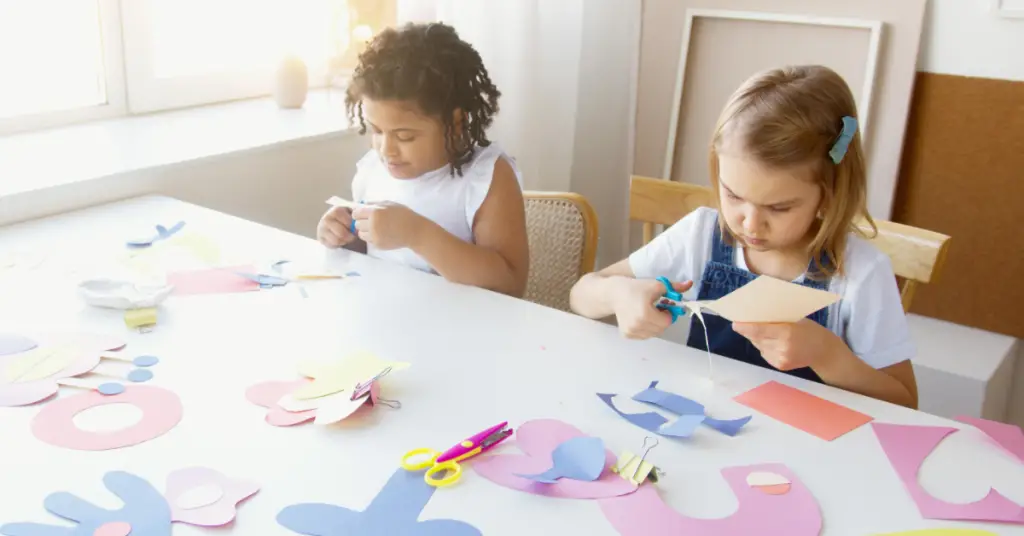
Art education is crucial in fostering creativity and promoting a well-rounded learning experience.
As you explore the importance of art education , you will find numerous benefits that contribute to the overall development of every student.
One of the primary reasons art education is essential is because it helps students engage with school and reduce stress.
Participating in various art forms, you can experience a sense of accomplishment, personal growth, and a deeper connection with your emotions.
This engagement enhances your learning experience and helps you better manage stress.
Incorporating art education into your curriculum aids in developing social-emotional and interpersonal skills .
Through artistic expression, you learn to communicate effectively, work collaboratively with others, and build empathy toward diverse perspectives.
These skills are essential for success in both personal and professional life.
A robust arts-learning environment enriches your educational experience by stimulating critical thinking and problem-solving skills.
Art education challenges you to view the world differently and develop innovative solutions to complex problems.
This exposure to diverse art forms fosters cognitive flexibility and adaptability, which are highly valued in today’s fast-paced world.
Partaking in art education equips you to handle constructive criticism. In the creative process, receiving feedback and refining your work is integral.
By embracing constructive criticism, you develop resilience and learn to persevere in facing challenges.
In conclusion, art education is vital to creating a well-rounded academic experience.
With numerous benefits, ranging from stress reduction to the development of interpersonal skills, it is clear that art education plays an essential role in every student’s overall growth.
Pedagogy in Art Education
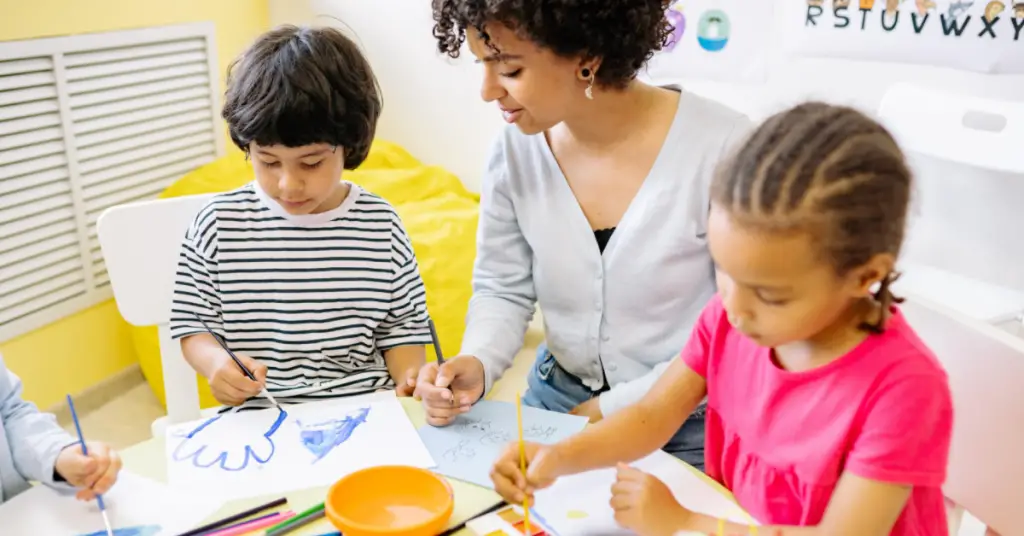
As an art educator, your primary role is to foster the development of creativity, critical thinking, and problem-solving skills in students.
Pedagogy in art education is vital to this role, as it outlines the methods and techniques used to teach art in a K-12 setting.
Choice-based pedagogy is a popular approach in art education, where you, as the art teacher, design learning activities that support students as artists and provide them with authentic choices to respond to their ideas and interests through art-making [1] .
This approach encourages student autonomy, allowing them to explore various materials and techniques and their artistic visions.
Another critical aspect to consider in your pedagogy is culturally responsive teaching. As an art teacher, you must acknowledge and respect the diverse backgrounds of your students.
By incorporating their unique cultural experiences into your teaching and adapting your methods to ensure that all students can connect with the material, you are contributing to an inclusive art education environment.
This can be done by showcasing diverse artists, discussing various art forms from different cultures, and incorporating culturally relevant themes into projects [2] .
You should also strongly understand discipline-specific knowledge and techniques to teach art effectively.
Your coursework and professional development should emphasize art history , contemporary artistic practices, and various media and materials.
This helps you introduce students to a wide range of artists and movements, enabling them to critically engage with the world of art.
As a teaching artist, you may also work in community settings, collaborating with schools, museums, or other organizations to bring art education experiences to various age groups and populations.
Your pedagogy might need to be flexible while working as a teaching artist, adapting to the unique needs and goals of each project or setting.
Collaboration and community engagement become essential elements of your teaching approach in these contexts.
Remember, your pedagogy in art education should be confident, knowledgeable, and clear, reflecting your dedication to fostering creative growth in your students while remaining attentive to their needs and backgrounds.
Doing so contributes to developing a new generation of artists and creative thinkers.
The Role of Art Educators
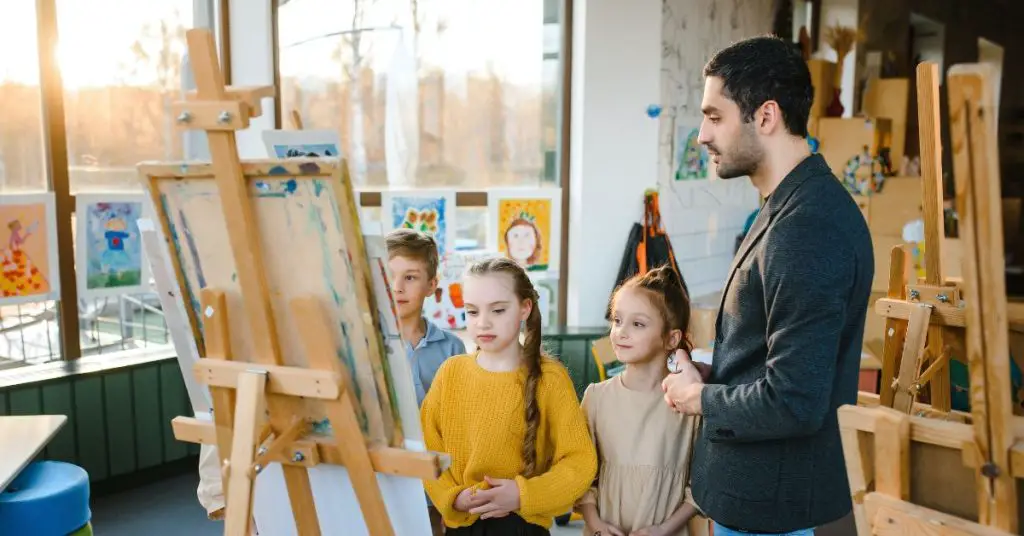
As an art educator, your primary responsibility is to provide students with a well-rounded understanding of the visual and tangible arts.
This includes teaching various art forms such as drawing, painting, sculpture, and design works and performing arts like dance, music, and theatre [3] .
Your role goes beyond teaching the techniques and skills required to create art. It would help if you also instilled in your students an appreciation for and understanding of the cultural , historical , and social contexts in which different art forms have evolved.
This helps students develop critical thinking abilities and better comprehend the significance of art in society.
In addition to being knowledgeable in your subject matter, as an art educator, you should cultivate a creative and supportive learning environment for your students.
This includes encouraging experimentation, curiosity, and self-expression while providing constructive feedback to help students grow as artists.
Actively engaging in arts advocacy is another crucial aspect of your role as an art educator.
You can promote the value of art education by communicating its benefits to parents, school administrators, and community stakeholders, highlighting how it contributes to students’ overall engagement and achievement in school National Art Education Association .
In summary, as an art educator, your role encompasses teaching a variety of art forms , nurturing creativity , fostering critical thinking , and advocating for the importance of an arts education in students’ lives.
Visual and Performing Arts
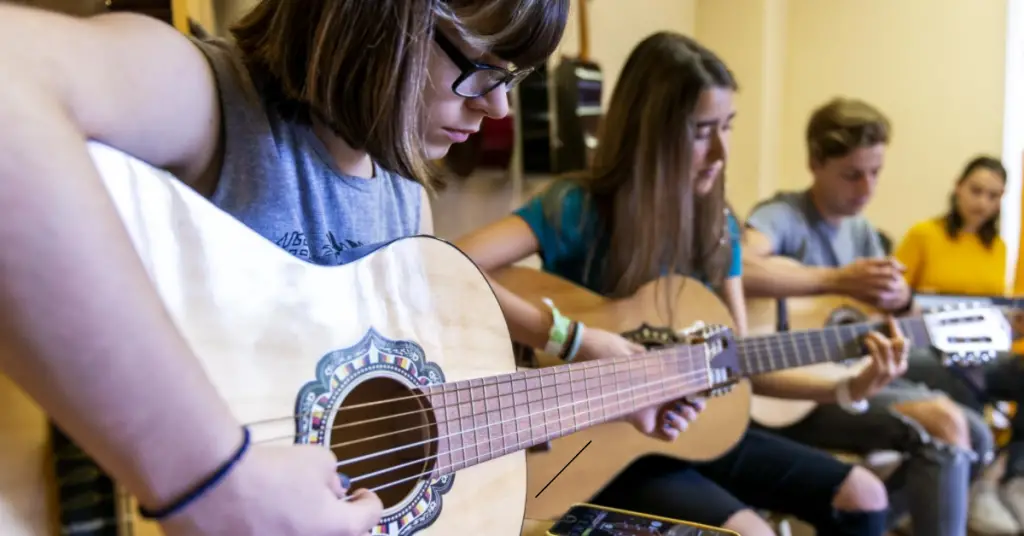
You’ll explore various disciplines in art education, including visual, performing, media , and contemporary art .
These fields allow you to understand creative expression better and develop your artistic abilities.
Visual art encompasses traditional fine arts such as drawing, painting, printmaking, photography, and sculpture.
You’ll also delve into media arts involving film, graphic communications, animation, and emerging technologies.
The curriculum includes architectural, environmental, and industrial skills like urban, interior, and product design [5] .
On the other hand, performing arts consist of disciplines like theatre, dance, and music. These fields emphasize movement, expression, and storytelling, often utilizing the human body as the primary instrument.
Similarly, media arts focus on the fusion of technology and artistic mediums, like film, sound, and digital art .
Contemporary art is a vital aspect of art education as it helps you examine the current trends and societal issues shaping today’s art world.
This can involve exploring the works of present-day artists, situating them within a broader cultural context, and critically analyzing their messages and methodologies.
Ultimately, by studying visual and performing arts, you will foster your critical thinking and creative skills, preparing you to contribute to the global art community.
Art Education Programs
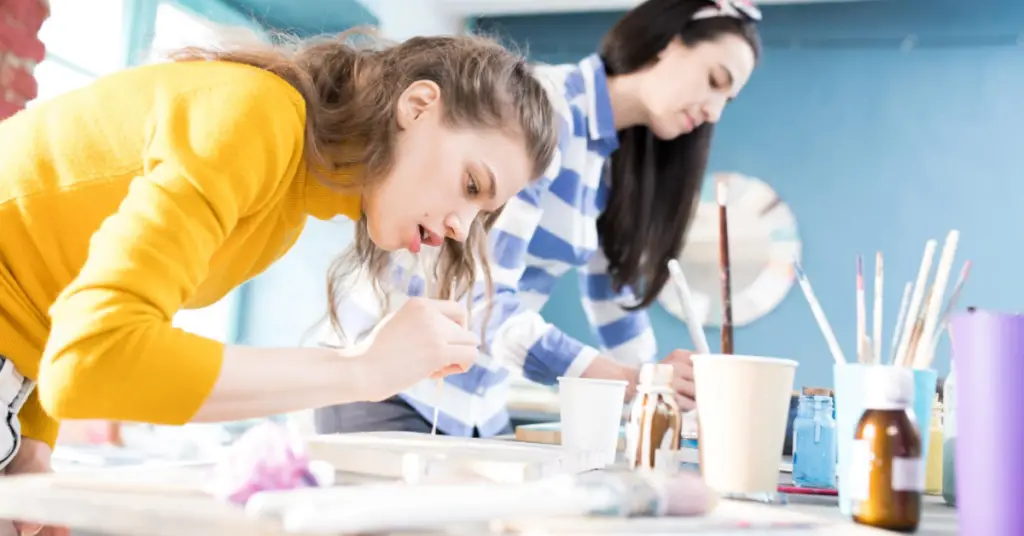
Art education programs play a crucial role in developing well-rounded students.
As a part of these programs, you’ll find courses encompassing various disciplines such as dance, music, theatre, and visual arts like drawing, painting, sculpture, and design works.
A Master of Arts degree in art education can help you advance your career and acquire expertise in art theory, practice, and pedagogy, enabling you to transform learning through creative engagement.
An art education program can give you the knowledge and skills to become an effective teacher and advocate for arts education in K-12 schools, community arts organizations, and other educational settings.
Many art education programs focus on building stronger communities and fostering strategic alliances that propel the arts forward as a solution.
As the demand for art education rises, it is essential to understand the benefits it offers to students.
When considering the different art education programs available, some focus on community arts, while others prioritize education in specific disciplines.
In community arts programs , participants often collaborate on art projects, emphasizing community involvement and social change. These programs aim to develop critical thinking, problem-solving, and communication skills.
Art education often plays a vital role in graduation programs, with many states having arts requirements for high school graduation.
This ensures that students are exposed to various art forms during their education, helping them appreciate diverse perspectives and enhance their creativity.
Enrolling in a reputed art school can help you access top-notch facilities, dedicated faculty members experienced in various art forms, and networks of fellow artists and creative professionals.
In summary, art education programs provide comprehensive exposure to the arts, building a solid foundation for creativity and critical thinking.
Participating in these programs contributes to developing your artistic skills and overall personal and intellectual growth.
Arts Integration in Education
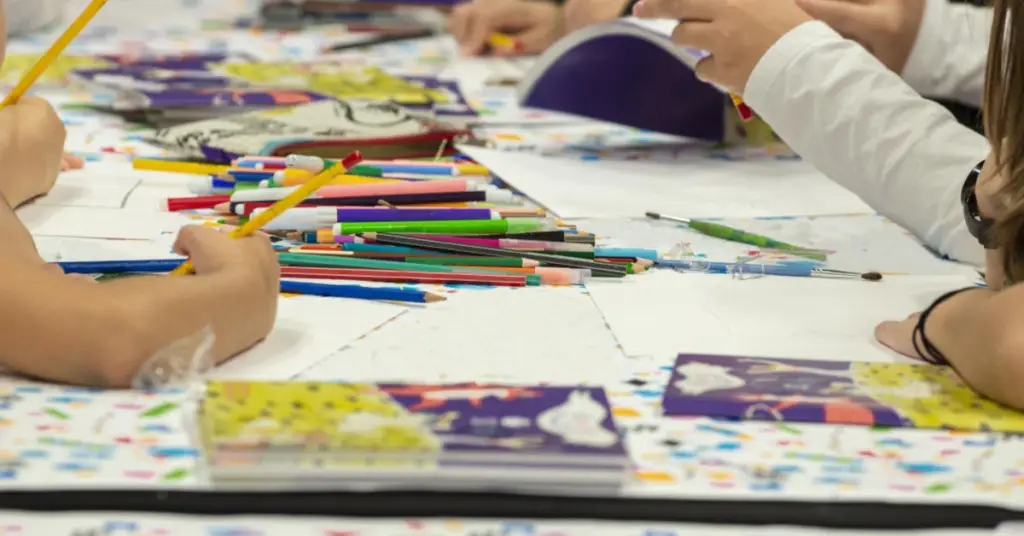
Arts integration is a teaching approach where content standards are taught and assessed equitably in and through the arts.
Through this interdisciplinary method, you can effectively incorporate multiple disciplines into your learning environments, enriching the core curriculum and enhancing students’ overall educational experience.
In an arts-integrated classroom, students construct and demonstrate understanding through various art forms.
This creative process connects an art form with another subject area, meeting evolving objectives and fostering a well-rounded educational experience.
For instance, you could combine visual arts with mathematics, helping students grasp geometric concepts in a hands-on, engaging way.
As a teacher looking to implement arts integration, collaboration is critical. Start by meeting with other educators to plan lessons using backward design.
This method focuses on the desired outcome, like your culminating event, exhibition, or final artwork , and builds the curriculum to achieve that goal.
This approach ensures all subject areas are effectively woven together and essential content is included in the learning process.
Implementing arts integration in your classroom has several benefits. It offers an innovative way to engage students and provides opportunities for differentiated instruction, reaching students with varying learning styles and abilities.
Connecting subject areas through the arts can create a more inclusive, diverse, and stimulating learning environment for all students.
So, as you strive to create a more dynamic and comprehensive educational experience for your students, consider exploring arts integration in your curriculum.
By merging multiple disciplines and fostering creativity, you can empower students and make learning more engaging, diverse, and meaningful.
Student Outcomes in Art Education
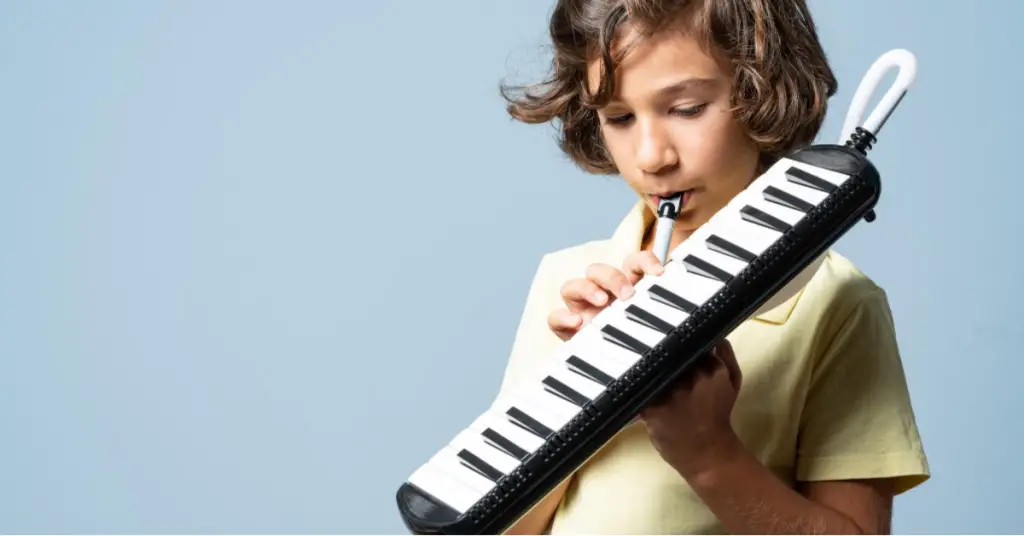
In art education, students experience various improvements in their learning outcomes.
By participating in arts programs, students can develop their ability to think creatively and critically, solve problems, and work effectively in teams.
When students engage in art education, they can nurture their creative thinking. Creative thinking is essential for creating innovative solutions to problems and uniquely expressing one’s ideas.
By honing their creative skills, students become more capable of generating new ideas and adapting to different situations.
Art education also fosters critical thinking abilities. As students analyze and interpret works of art, they learn to evaluate different perspectives, assess the quality of arguments, and make informed decisions.
This more profound understanding of artistic meaning helps students develop a more nuanced approach to interpreting the world around them.
Problem-solving is another critical learning outcome associated with art education. Students who engage in art projects often face complex challenges that require them to find solutions by experimenting with various techniques and materials.
Through this process, students become comfortable tackling complex problems, which can benefit them in other areas of their education and life.
Lastly, art education enhances teamwork skills. Many art projects require students to collaborate with others, either by working on a joint project or by critiquing each other’s work.
Students learn to communicate effectively , listen to others, and contribute to a larger goal by engaging in these collaborative activities.
Students can experience growth in these essential skills by participating in art education.
Creative thinking, critical thinking, problem-solving, and teamwork are all crucial outcomes of a well-rounded art education, providing students with a strong foundation for future success.
Art Practice and Learning Opportunities
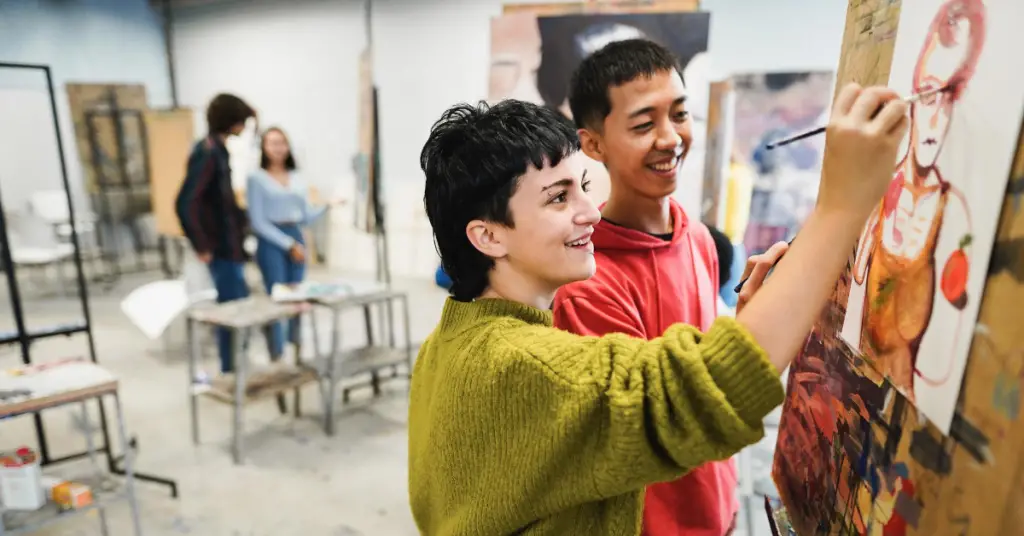
Studio Practice
In art education, studio practice is a crucial component that enables you to develop your technical skills and artistic abilities.
Engaging in hands-on experiences within a studio allows you to explore various materials, techniques, and creative processes.
This active participation not only refines your skills but also fosters a deeper understanding and appreciation of the visual arts.
Practical Experiences
Practical experiences in art education provide invaluable opportunities to apply your artistic knowledge in real-life situations.
These experiences can range from collaborating on group projects, participating in workshops, or attending masterclasses led by experienced artists.
Through these engagements, you gain insights into different perspectives, expand your creative horizons, and enhance your interpersonal skills.
Art Making and Creativity
Art-making and creativity go hand-in-hand in the realm of art education. By actively participating in creative activities, you develop a stronger sense of self-expression and expand your ability to generate innovative ideas.
Engaging in imaginative and artistic practice also promotes critical thinking, problem-solving, and visual communication skills, which can benefit you in various aspects of life.
Embracing art-making and creativity fosters a lifelong love of learning and enriches your educational experience.
The Impact of Art Education on Early Childhood Development
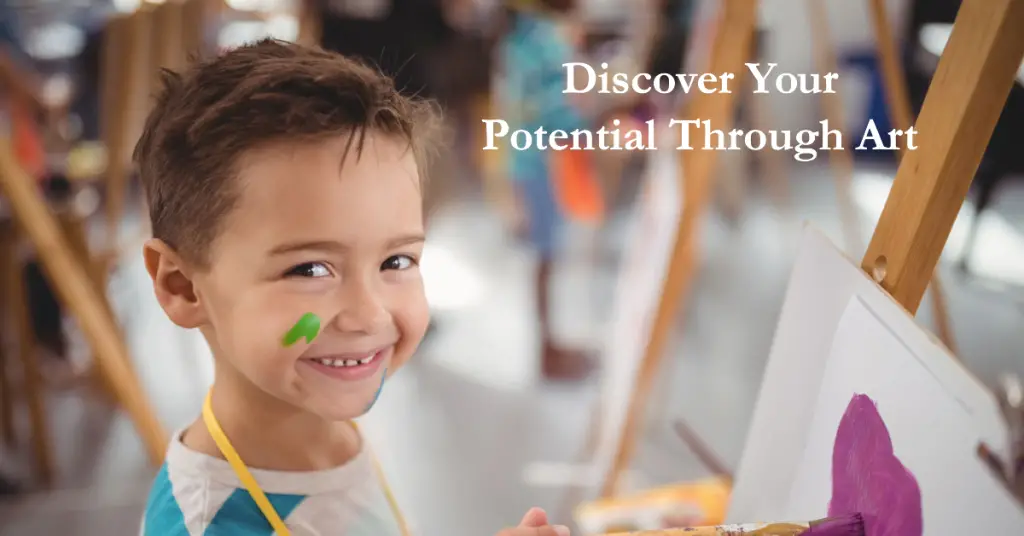
In early childhood education, the integration of art plays a significant role in the development of young artists.
Art education can be especially beneficial in the early years, as it helps to develop a strong foundation for future learning and overall growth.
When you introduce young children to the art world, you help foster their social and emotional development .
Various studies have demonstrated the value of incorporating artistic practices into early childhood education programs [6] .
Encouraging young learners to engage in imaginative activities can improve social interaction, self-expression, and emotional regulation skills.
It is essential to believe that art education provides a unique opportunity for children to explore their creativity and learn to appreciate the beauty in their surroundings.
Children develop a sense of curiosity and wonder that translates into a lifelong love of learning by participating in diverse artistic experiences, such as painting, drawing, sculpture, and music.
As you support your child’s artistic journey, consider providing various materials and opportunities for them to engage in creative exploration.
By offering a safe and nurturing environment where children can experiment and express themselves freely, you can develop critical skills such as problem-solving, spatial awareness, and fine motor coordination [7] .
In conclusion, as an advocate for your child’s education, it is essential to consider the impact of art education on their early childhood development .
By embracing the power of creativity and artistic expression, you can ensure that your child experiences a well-rounded and enriching educational journey with a solid foundation for future success.
Art Education Beyond the Classroom

Art education is not confined to the walls of a classroom. Many opportunities for growth and development exist beyond traditional art education settings, such as museum education, arts organizations, and community arts programs.
Museums are a great place to expose yourself to various art forms and expand your understanding of different artistic styles and periods.
By participating in museum education , you can enhance your appreciation for these masterpieces and gain a deeper connection to the cultures they represent.
While in-person art classes offer a distinct experience, joining art organizations can provide valuable knowledge and opportunities to network with other artists and professionals .
These groups often provide workshops, events, and resources to help you grow as an artist.
Community arts programs are another excellent way to pursue your artistic passions. Engaging in community arts helps bridge the gap between formal art education and everyday creative expression.
It is a chance for people of all ages and skill levels to collaborate, learn from each other, and make an impact in their local neighbourhoods.
Art education can also benefit non-arts fields by fostering creativity, problem-solving, and collaboration skills.
Brainstorming techniques, like collaborative sketching and mind-mapping, can be used across various industries to generate new ideas and improve decision-making.
Remember, art education is not just about painting and drawing; it is a flexible, powerful tool to help you develop your unique creative voice and become a better problem solver.
Take advantage of the opportunities available, explore new avenues, and let your art flourish beyond the classroom.
Future Perspectives in Art Education

Art education plays a vital role in shaping the creative minds of the future.
With upcoming trends and advancements, arts-based methods are being integrated into various aspects of learning, ensuring a more comprehensive and innovative approach to education.
One key aspect of future perspectives in art education is how it prepares students for the evolving world.
Including artistic practices in curriculums allows them to develop critical thinking, problem-solving, and communication skills.
Engaging in creative arts fosters a deep understanding of different perspectives, promoting empathy and tolerance.
Moreover, the integration of new concepts and innovations in the field of art education will provide unique opportunities for students to thrive.
For instance, using digital technologies and online platforms can open doors to new methods of exploration and collaboration, enabling learners to connect with experts from various disciplines and backgrounds.
The embrace of technology in art education will significantly enhance how you approach creative projects, equipping you with the necessary tools to master emerging forms of artistic expression.
Furthermore, the future of art education aims to focus on the importance of art in addressing social and emotional well-being.
Research indicates that engaging in creative endeavours helps students express themselves safely and positively, ultimately benefiting their mental health.
In conclusion, as you embrace the future perspectives in art education, you stand to benefit from integrating arts-based methods, new concepts, and a focus on holistic development.
By being involved in this ever-evolving field, you will be better prepared for the challenges ahead, fostering creativity and innovation that can significantly impact the world.
Final Thoughts on What is Art Education
As we conclude our exploration of art education, we are left with a deep appreciation for the power of creativity and self-expression.
Art education is not just about learning how to draw or paint; it’s about developing critical thinking skills, emotional intelligence, and empathy.
It’s about preparing students for a future where innovation and creativity are more crucial than ever before.
Art education can change the world by giving students the tools and skills they need to succeed in life and work.
So let us continue to support and advocate for art education, and let us never forget the profound impact it can have on individuals, communities, and society.
About the author
We are a team of creatives dedicated to sharing tips, tricks, and step-by-step guides on all things related to art and design. Check out our blog for a list of all the awesome things we post!
Leave a Reply Cancel reply
Your email address will not be published. Required fields are marked *
Save my name, email, and website in this browser for the next time I comment.
Subscribe to newsletter
related posts
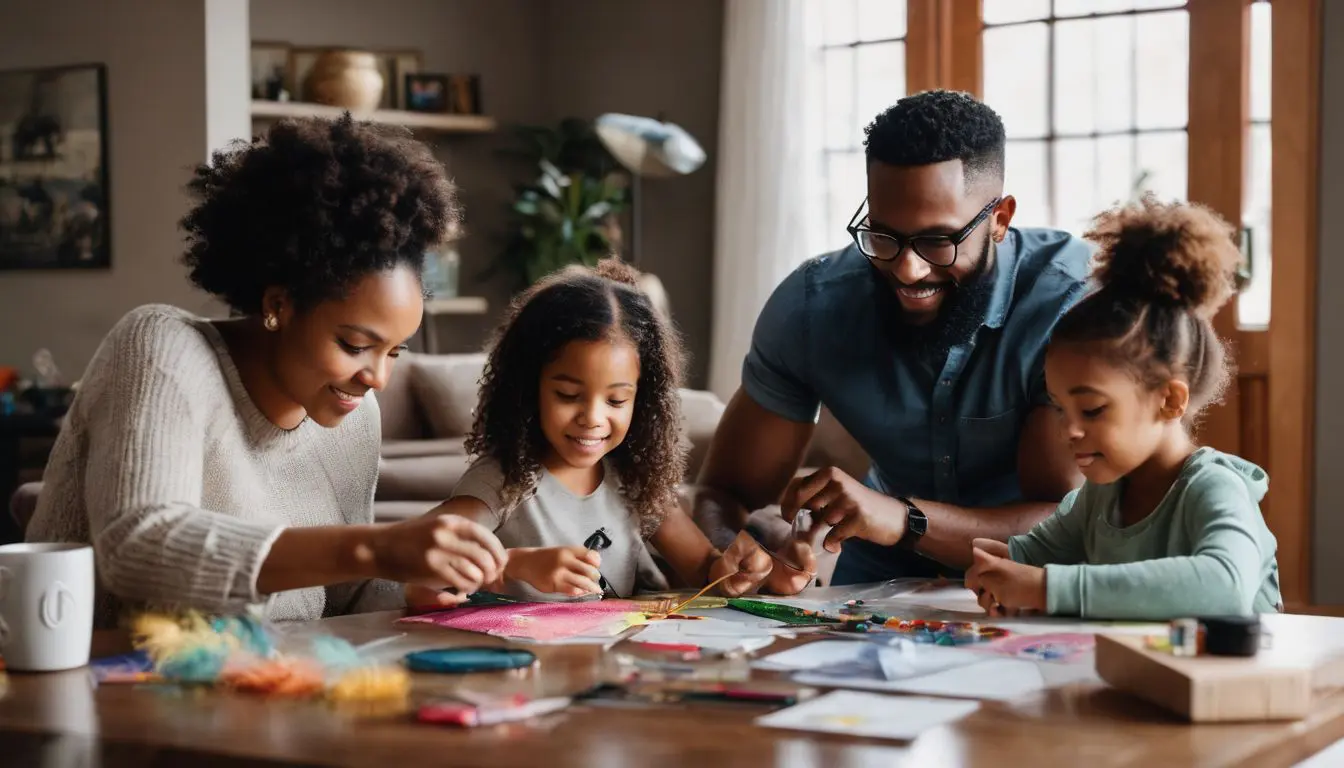
10 DIY Craft Ideas for the Home to Add Personal Touches
Whether you’re looking to craft a statement piece for your…
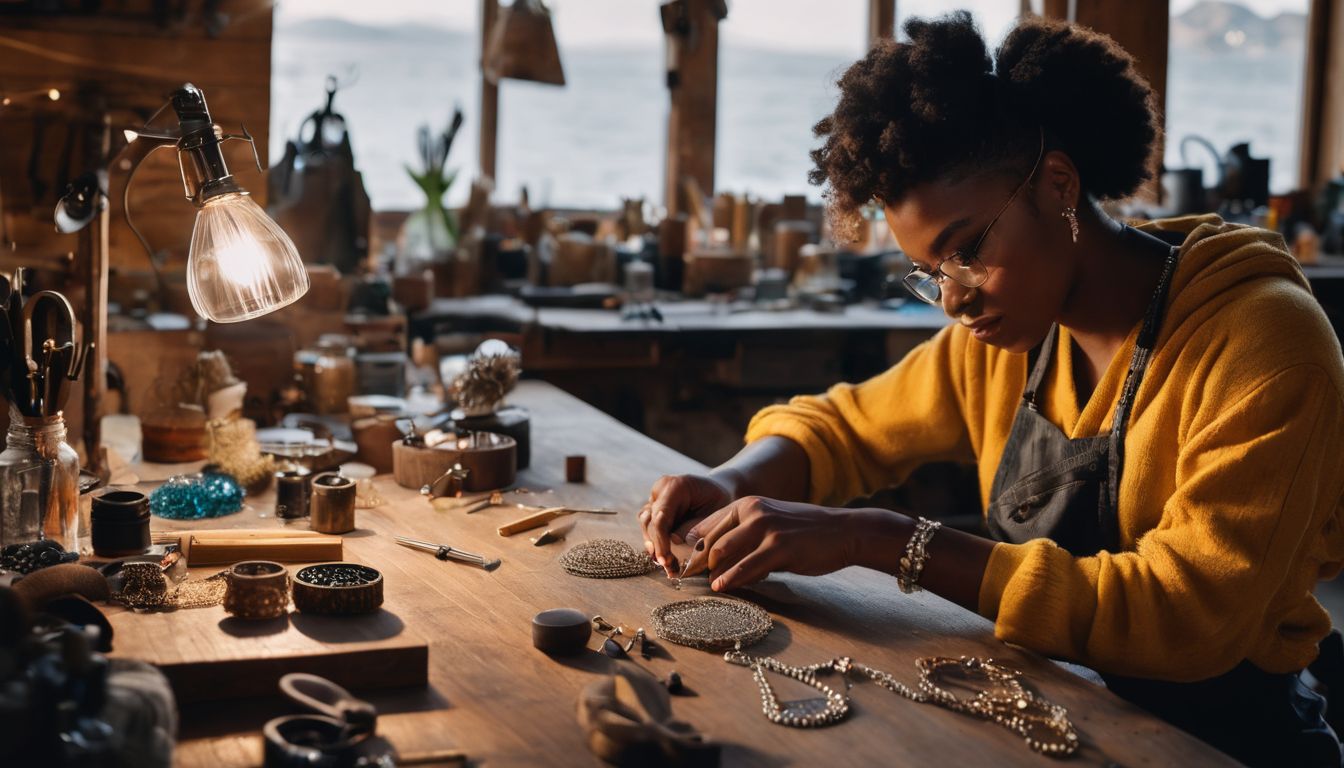
Top 24 DIY Craft Ideas to Sell and Make Money from Home
DIY Craft Ideas to Sell Dreaming of turning your crafty…

DIY Craft Ideas For Gifts: 50 Handmade Projects for Loved Ones
Finding that perfect gift for a special someone can often…
Privacy Overview


What it Takes to Live as an Ar..
Creative arts develop problem solving skills, the easiest seo tips for onlin...
- by Kaylee Osuna
- Artists Featured Articles
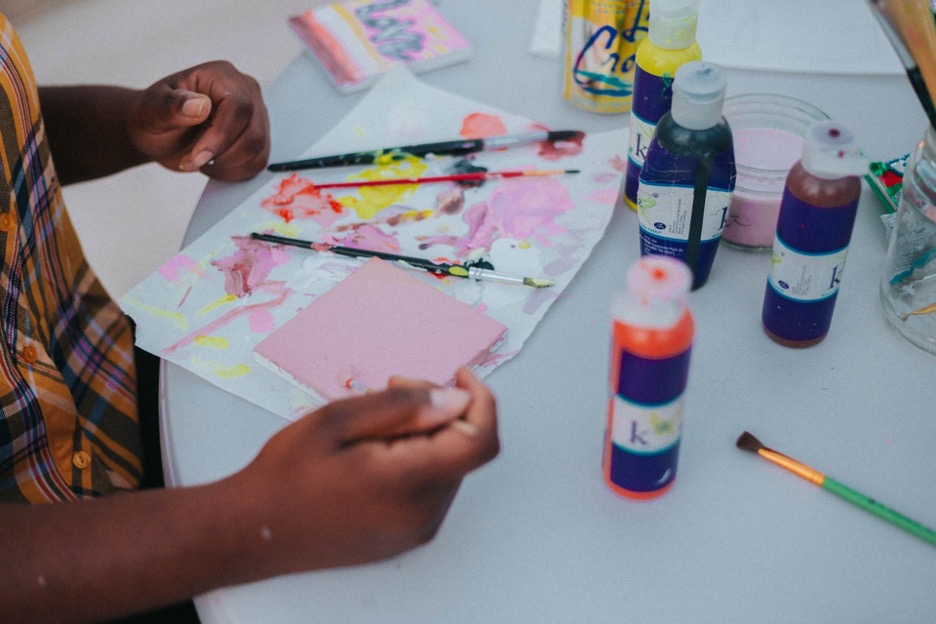
Public education often considers fine arts classes and programs expendable luxuries. This article explores how beneficial the fine arts are in education.
It is no secret that, when faced with recession pressures and budget cuts, most American public school systems decrease funding for fine arts programs or cut them entirely. Reasons cited for these decisions include fine arts do not generate much money for schools, nor are they part of the school’s core curriculum; therefore, they are expendable. Unfortunately, educational leaders are often not able to maximize the full educational and economic possibilities of the fine arts, and consequently, students’ learning opportunities suffer.
FINE ARTS PROGRAMS CAN GENERATE MONEY FOR SCHOOLS
Many American public schools sponsor annual plays and musicals, and despite performances being limited to a handful per semester, they do generate income for the school through ticket sales. Although they do require a considerable amount of time and practice to perfect these performances, as well as need a limited budget for props and supplies.
However, school drama performances can be increased to generate revenue and stay within budget by sponsoring ticketed events that do not require as much time or resources to produce. Such an example is orchestrating a comedy improv troupe, where only a few simple props and little preliminary preparation are necessary.
In addition, most schools completely neglect to showcase the talents of their budding visual artists. Sponsoring frequent school-wide art shows, auctions, and awards can generate additional funds for public schools, as well as provide enriching educational experiences for students.
For example, until visual art students reach college, few have opportunities to apply to an open call for entries or learn how to promote and set up an art exhibition. Learning these skills early gives visual arts students an edge over many art students who begin to navigate the exhibition circuit in their later college years. Furthermore, participating in art shows provides high school students who intend to study visual art with valuable experience to add to their college applications.
FINE ARTS PROGRAMS ARE BENEFICIAL TO STUDENTS’ LEARNING
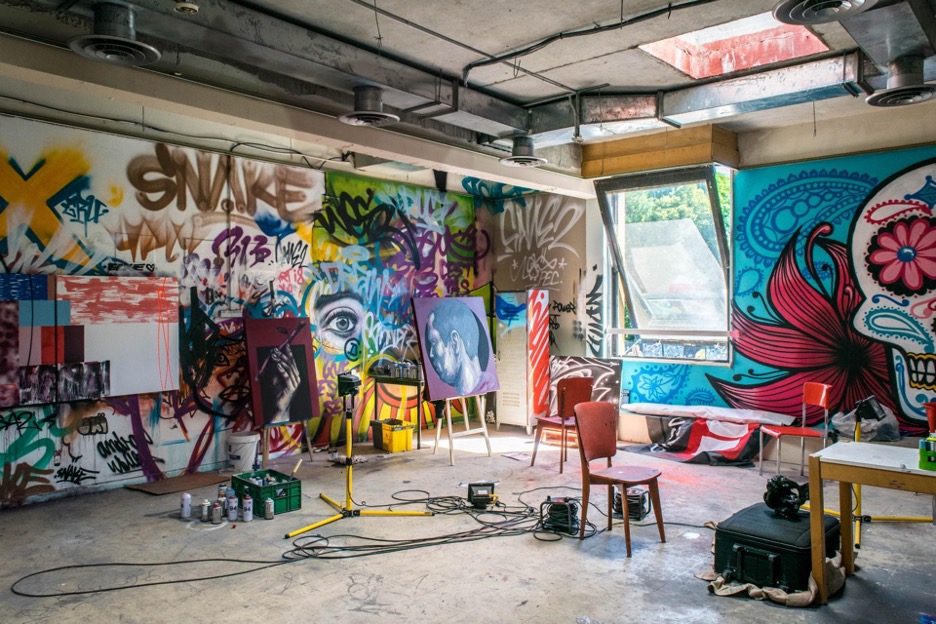
Matthieu Comoy for Unsplash
Art education authorities Eric Oddleifson and Judith Simpson have analyzed numerous studies conducted in urban and suburban school systems involving increased integration of the arts into classrooms. These studies overwhelmingly found that when the arts are incorporated into daily curricula, positive results are observed which transcend all subject areas. Examples include increased student creativity, better problem-solving abilities, more options to express ideas, open-mindedness and tolerance for different people and ways of thinking, and increased joy and motivation to learn.
Oddleifson’s writing also references the theories of Harvard psychologist Howard Gardner, who has conducted additional research advocating fine arts in schools. Gardner hypothesizes that there are seven total forms of intelligence: visual/spatial, musical, kinesthetic, interpersonal, intrapersonal, verbal, and logical. The first five intelligence forms are predominantly found in fine arts. However, most American school systems’ core curricula focus on subjects involving verbal and logical intelligence, such as English and science.
Removing fine arts from educational institutions not only deprives students of a well-rounded education but also denies students the ability to maximize their intellectual capacities. Just as art students require a scientific understanding of the natural world so they can render plants and animals with photo-realistic accuracy, wouldn’t science students benefit from creative stimulation to better generate ideas for hypotheses and experiments?
For students who are passionate about the fine arts, little is more devastating than extensive cutbacks or complete removal of fine arts classes. Furthermore, students who prefer other subjects do learn beneficial skills from fine arts, and the fine arts can contribute financially to public schools. Let us remember the true purpose of education and enrich students with a broad range of subjects so they may reach their full potential.
ART TEACHES MAKING JUDGMENTS ABOUT QUALITATIVE RELATIONSHIPS
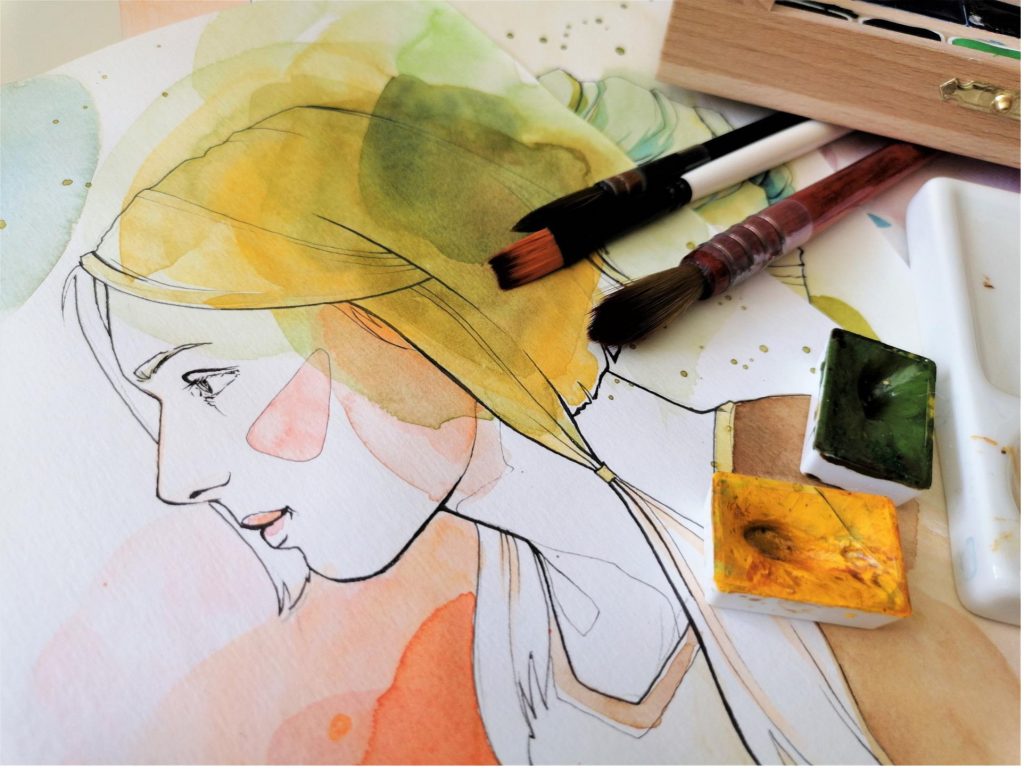
Martina_Bulkova for Pixabay
Through the development of qualitative intelligence, art teachers assist students to raise their consciousness and increase their capacity to interpret their world. Drawing on the work of Dewey, Eisner explains that the creation, appreciation, and understanding of visual form in general, and visual art in particular, is a mode of activity he considers to be a form of intelligence.
“The production and appreciation of visual art is a complex and cognitive-perceptual activity that does not simply emerge full-blown on its own.” [Eisner. 1972, p113]
DEFINITION OF QUALITATIVE INTELLIGENCE
Dewey advanced the idea that intelligence is the quality of an activity performed on behalf of inherently worthwhile ends. On this account, intelligence is a verb, a type of action, not a quantifiable noun, something that one possesses. For Dewey, intelligence is how a person copes with a problematic situation.
QUALITATIVE INTELLIGENCE AS PROBLEM SOLVING
When applying this notion of “intelligence” as problem-solving to the way students learn to make meaning through the modality of visual art, Eisner develops a descriptive argument [2002, p114]. He describes a process whereby students identify a problem, select qualities, and organize them so that they function expressively through a medium.
- A student who sculpts paints or draws is solving a problem
- He or she must find a way to transform, in some medium, an idea image, or feeling
- They start with a blank piece of paper, a lump of material, or data in electronic form
- The student uses this raw material to articulate a vision
- During this process, they hope to be responsive to the consequences of personal actions when managing material so that it functions as a medium
- When manipulating the media, the artist learns to be aware of the happy accident that is inevitable in the creation of artworks
- Through this learning strategy, it is hoped that the student will develop an ability to manage anxiety, frustration, and tension. The ability to forestall closure allows for the possibility of openness to a moment of unity and cohesion
- Students learn to recognize moments when the whole work comes together
- During the process, students will develop an ability to cope with thousands of interactions among visual qualities. Moments of cohesiveness, clarity, and unity will emerge through the child’s use of material
- Upon reflection students (perhaps in conversation with others) will conceive of her artistic purpose and recognize the meaning
Eisner calls the ability to problem solve in this way qualitative intelligence because it deals with the visualization of qualities expressed in images. The activity is directed at the creation and control of these qualities. It is generally recognized that artists work with seven elements of design.
MEDIATION THROUGH ARTISTIC THOUGHT
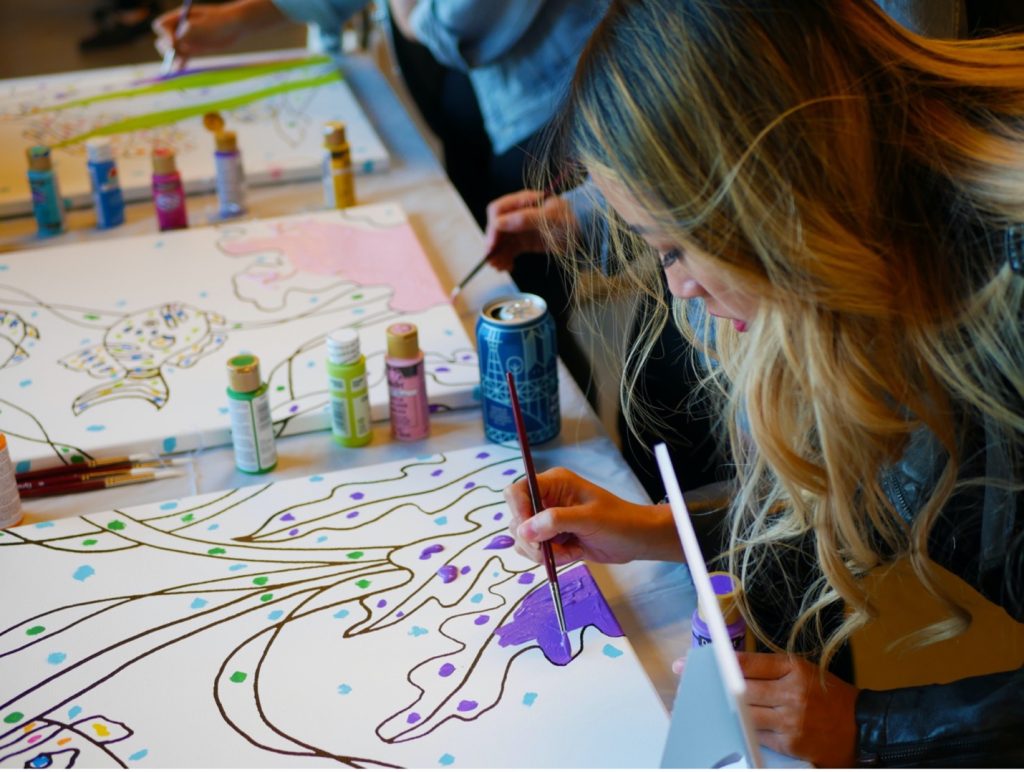
Rahul Jain for Unsplash
Qualities are mediated through thoughts, which are managed through the process, which terminates in a qualitative whole. A qualitative whole is an art form that expresses an idea or emotion by how those qualities have been created through the organization.
People use this form of intelligence throughout daily living. Artistic decision-making occurs when people select furnishings for the home, design a brochure, create a website layout, or decide upon what clothes to wear. The ability to do this is not simply given at birth, as one aspect of a genetic bundle of attributes. Rather, qualitative intelligence is an educable mode of expression that develops through experience and (hopefully) with guidance.
Intelligence, in this sense, is capable of expansion and through expansion, it expands the potential understanding of students. Through the arts, teachers assist students to raise their consciousness and increase their capacity to interpret their world.
The tendency to separate art from intellect and thought from feeling has been a source of difficulty for the field of art education. One of the results of this distinction is a lessening of the value of the creative arts fields of inquiry within the curriculum. Such a dichotomous distinction does not do justice to art or education.
For another presentation of this view see The Philosophy of a Creative Arts Educator Wisdom is the Legacy Left by Harry Broudy.
About the author : Kaylee Osuna is a professional writer at EssayWriterCheap.org , who loves to read and write about Psychology. She has participated in different conferences and presentations to gain more knowledge and experience. Her goal is to help people cope with their problems.
Kaylee Osuna
Click here to cancel the reply.
Your email address will not be published. Required fields are marked *
ARTEXPO NEW YORK 2024

ABN Subscribe

THE REDWOOD ART COLLECTIVE

New evidence of the benefits of arts education
Subscribe to the brown center on education policy newsletter, brian kisida and bk brian kisida assistant professor, truman school of public affairs - university of missouri @briankisida daniel h. bowen dhb daniel h. bowen assistant professor, college of education and human development - texas a&m university @_dhbowen.
February 12, 2019
Engaging with art is essential to the human experience. Almost as soon as motor skills are developed, children communicate through artistic expression. The arts challenge us with different points of view, compel us to empathize with “others,” and give us the opportunity to reflect on the human condition. Empirical evidence supports these claims: Among adults, arts participation is related to behaviors that contribute to the health of civil society , such as increased civic engagement, greater social tolerance, and reductions in other-regarding behavior. Yet, while we recognize art’s transformative impacts, its place in K-12 education has become increasingly tenuous.
A critical challenge for arts education has been a lack of empirical evidence that demonstrates its educational value. Though few would deny that the arts confer intrinsic benefits, advocating “art for art’s sake” has been insufficient for preserving the arts in schools—despite national surveys showing an overwhelming majority of the public agrees that the arts are a necessary part of a well-rounded education.
Over the last few decades, the proportion of students receiving arts education has shrunk drastically . This trend is primarily attributable to the expansion of standardized-test-based accountability, which has pressured schools to focus resources on tested subjects. As the saying goes, what gets measured gets done. These pressures have disproportionately affected access to the arts in a negative way for students from historically underserved communities. For example, a federal government report found that schools designated under No Child Left Behind as needing improvement and schools with higher percentages of minority students were more likely to experience decreases in time spent on arts education.
We recently conducted the first ever large-scale, randomized controlled trial study of a city’s collective efforts to restore arts education through community partnerships and investments. Building on our previous investigations of the impacts of enriching arts field trip experiences, this study examines the effects of a sustained reinvigoration of schoolwide arts education. Specifically, our study focuses on the initial two years of Houston’s Arts Access Initiative and includes 42 elementary and middle schools with over 10,000 third- through eighth-grade students. Our study was made possible by generous support of the Houston Endowment , the National Endowment for the Arts , and the Spencer Foundation .
Due to the program’s gradual rollout and oversubscription, we implemented a lottery to randomly assign which schools initially participated. Half of these schools received substantial influxes of funding earmarked to provide students with a vast array of arts educational experiences throughout the school year. Participating schools were required to commit a monetary match to provide arts experiences. Including matched funds from the Houston Endowment, schools in the treatment group had an average of $14.67 annually per student to facilitate and enhance partnerships with arts organizations and institutions. In addition to arts education professional development for school leaders and teachers, students at the 21 treatment schools received, on average, 10 enriching arts educational experiences across dance, music, theater, and visual arts disciplines. Schools partnered with cultural organizations and institutions that provided these arts learning opportunities through before- and after-school programs, field trips, in-school performances from professional artists, and teaching-artist residencies. Principals worked with the Arts Access Initiative director and staff to help guide arts program selections that aligned with their schools’ goals.
Our research efforts were part of a multisector collaboration that united district administrators, cultural organizations and institutions, philanthropists, government officials, and researchers. Collective efforts similar to Houston’s Arts Access Initiative have become increasingly common means for supplementing arts education opportunities through school-community partnerships. Other examples include Boston’s Arts Expansion Initiative , Chicago’s Creative Schools Initiative , and Seattle’s Creative Advantage .
Through our partnership with the Houston Education Research Consortium, we obtained access to student-level demographics, attendance and disciplinary records, and test score achievement, as well as the ability to collect original survey data from all 42 schools on students’ school engagement and social and emotional-related outcomes.
We find that a substantial increase in arts educational experiences has remarkable impacts on students’ academic, social, and emotional outcomes. Relative to students assigned to the control group, treatment school students experienced a 3.6 percentage point reduction in disciplinary infractions, an improvement of 13 percent of a standard deviation in standardized writing scores, and an increase of 8 percent of a standard deviation in their compassion for others. In terms of our measure of compassion for others, students who received more arts education experiences are more interested in how other people feel and more likely to want to help people who are treated badly.
When we restrict our analysis to elementary schools, which comprised 86 percent of the sample and were the primary target of the program, we also find that increases in arts learning positively and significantly affect students’ school engagement, college aspirations, and their inclinations to draw upon works of art as a means for empathizing with others. In terms of school engagement, students in the treatment group were more likely to agree that school work is enjoyable, makes them think about things in new ways, and that their school offers programs, classes, and activities that keep them interested in school. We generally did not find evidence to suggest significant impacts on students’ math, reading, or science achievement, attendance, or our other survey outcomes, which we discuss in our full report .
As education policymakers increasingly rely on empirical evidence to guide and justify decisions, advocates struggle to make the case for the preservation and restoration of K-12 arts education. To date, there is a remarkable lack of large-scale experimental studies that investigate the educational impacts of the arts. One problem is that U.S. school systems rarely collect and report basic data that researchers could use to assess students’ access and participation in arts educational programs. Moreover, the most promising outcomes associated with arts education learning objectives extend beyond commonly reported outcomes such as math and reading test scores. There are strong reasons to suspect that engagement in arts education can improve school climate, empower students with a sense of purpose and ownership, and enhance mutual respect for their teachers and peers. Yet, as educators and policymakers have come to recognize the importance of expanding the measures we use to assess educational effectiveness, data measuring social and emotional benefits are not widely collected. Future efforts should continue to expand on the types of measures used to assess educational program and policy effectiveness.
These findings provide strong evidence that arts educational experiences can produce significant positive impacts on academic and social development. Because schools play a pivotal role in cultivating the next generation of citizens and leaders, it is imperative that we reflect on the fundamental purpose of a well-rounded education. This mission is critical in a time of heightened intolerance and pressing threats to our core democratic values. As policymakers begin to collect and value outcome measures beyond test scores, we are likely to further recognize the value of the arts in the fundamental mission of education.
Related Content
Seth Gershenson
January 13, 2016
Brian Kisida, Bob Morrison, Lynn Tuttle
May 19, 2017
Joan Wasser Gish, Mary Walsh
December 12, 2016
Education Policy K-12 Education
Governance Studies
Brown Center on Education Policy
Ariell Bertrand, Melissa Arnold Lyon, Rebecca Jacobsen
April 18, 2024
Modupe (Mo) Olateju, Grace Cannon
April 15, 2024
Phillip Levine
April 12, 2024
Why the Future of Art Education is Bright

The past six months have been unpredictable and dark, to say the least. Art educators, students, and the entire team at AOEU have ebbed and flowed with the currents that were at first gentle and mild and now are in a constant pendulum swing. The landscape of education at large has also adjusted. What was once a predictable cycle of funding and curriculum has encountered new variables that will impact education for decades to come.
Administrators, teachers, and our AOEU team are constantly asked, “Where do you see K-12 art education going in the next year?”
I can say with complete confidence that art education is here to stay. Art education and creative thinking are needed now more than ever and there is plenty of evidence for it. Here’s why:

E.J. Caffaro, Chief Growth Officer
Art is a part of a well-rounded education.
In November of 2018, the American Institutes for Research—a nonprofit, nonpartisan behavioral and social science research, evaluation, assessment, and technical assistance organization based in Washington, D.C.—released a study titled, “ Review of Evidence: Arts Education Through the Lens of ESSA ,” and funding “devoted specifically to advancing arts education.”
The report explains, “The inclusion of arts in Every Student Succeed Act (ESSA) shows that policymakers, not only arts advocacy groups and educators, view arts as an essential component in a well-rounded education.” ESSA is the federal grant money that helps public schools provide a quality, well-rounded education for all students. To summarize, federal funding has deemed the arts an essential part of education.
Art has proven its impact.
Art teachers know this, but art education greatly impacts overall student achievement, and there is data to prove it. In the same study, The American Institutes for Research has confirmed this in many ways. Their research was aimed at determining what impact well-designed and well-implemented arts education interventions have on student outcomes.

According to the meta-analysis, the average impact analyzed across a multitude of studies showed a “moderate and statistically significant” effect in the impact of the domains in art learning, social-emotional learning, overall attitude, and process abilities. “In summary, with the right interventions, art education is proven to greatly impact overall student achievement.”
Art is inherent in Social Emotional Learning (SEL).
Art education and creative practice are natural partners to SEL. In the next few years, as students, teachers, and communities cope with the collective trauma of this past year, the in-person or virtual art classroom is where the healing is going to happen. Art education, like all SEL anchored courses, will grow. Students will return to us with significant trauma and disrupted lives, and the art room will be there to support students in those situations. Art is one of the answers.
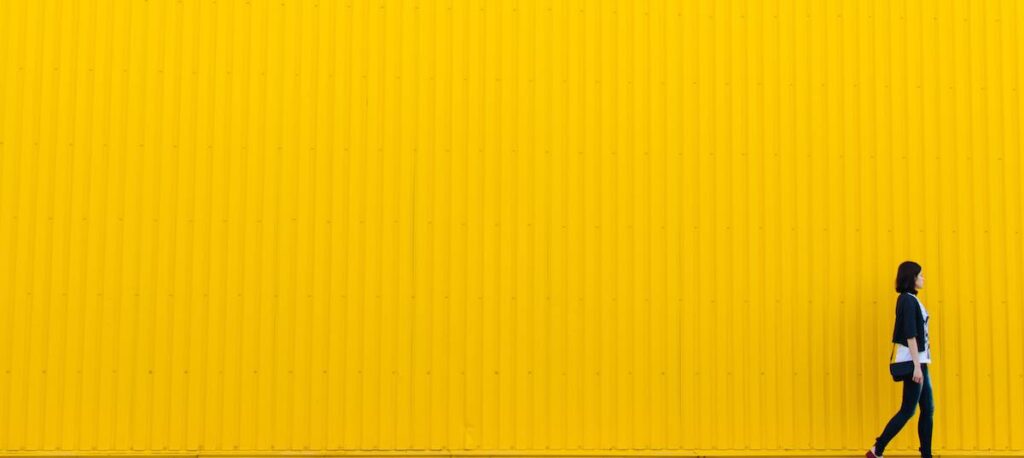
In fact, many school districts across the nation have already identified SEL as a focus of learning. Students need to be able to explore and understand themselves and their changing world. Art education is a vital part of that process. While obviously, the core curriculum is essential, art education with the flexibility of delivery and emotional impact can move beyond the academic limits and reach students where and how it really matters.
Art education has the dedication of its teachers.
In serving the education technology space throughout my career, I have come to gain a unique perspective of the tremendous impact effective educators and administrators can have in influencing student outcomes. I have had the privilege to sit alongside our country’s most influential administrators and the largest school systems in crafting plans and implementing resources to restore or ensure confidence in delivering classroom instruction. Some of these organizations are most notably, The Art of Education University, Frontline Education, and School Improvement Network.

From my experience with teachers all over the nation, I have never met a group of more authentic teachers. The connections art educators are able to make with students as they solicit the best of their talents and voices is an amazing, unmatched skill. Furthermore, art educators accept students for who they are. The grace and empathy they exhibit come forward in nearly every interaction they have. Finally, the passion art educators bring to the landscape is palpable. They get excited when they see something happen for their students. It truly is a privilege to work with and for art educators.
Art educators are built for this.
Because of their passion and dedication art teachers are uniquely equipped to lead education into the next year. Art educators already rely on grit, and they know how to make things work. They are constantly working in organized chaos, looking at limitations as opportunities, and making something from nothing. Simply put, they are prepared to thrive and teach others to do the same.
Let’s not be naive.
Nothing is a guarantee. Some people are holding their breath to see what a new administration and post-pandemic return to school will bring, but whether education decentralizes or centers more control at the federal level, no one will cut funds for education. The funding allocation, however, will change, sometimes it is more, sometimes it is less, as it always has been.
That said, art education advocacy never stops. It is only in this position today because of the hard work of art educators over the past decades. It has not “arrived.” There will always be pushback for enriching art education in some districts and communities. Good work needs to continue.
We are so much more than a University.
Working with and for an organization truly dedicated to, “Growing amazing art teachers by providing rigorous, relevant, and engaging learning at every stage of their career,” I am fully confident that what we bring to the landscape benefits and brings art education to the next level.
We give art teachers the gift of time and the assurance of quality in the Magazine and Podcasts , FLEX Curriculum , PRO Learning , Graduate Courses , NOW Conferences , and the Master’s Degree program. We are a university and so much more. We are constantly adapting to the needs of teachers so they can pivot and connect with students regardless of it being online, hybrid, or in-person. We give the best of AOEU, so art educators can give the best of themselves to their students and communities.
Final Thoughts
A new year will be unpredictable. While we never really “know” what is around the corner, we can be assured that with the proven impact of the arts on student achievement, the natural connection to SEL, and most importantly, the dedication of art educators, the future will not be dim and obscure, but shine brighter than ever before.
What positive things do you see on the horizon for art education? How have the past six months impacted your view of art education’s future?
Magazine articles and podcasts are opinions of professional education contributors and do not necessarily represent the position of the Art of Education University (AOEU) or its academic offerings. Contributors use terms in the way they are most often talked about in the scope of their educational experiences.

E.J. Caffaro
E.J. Cafarro is AOEU’s Chief Growth Officer.

15 Genius Ways to Advocate for Your Art Program During Youth Art Month (YAM)

How to Harness Data to Confidently Advocate for Your Art Program: State of Art Education 2024

12 Ways Your Nontraditional Art Background Prepared You To Teach Art

6 Ways the Visual Arts Promotes Resilient Learners for Life

- < Previous
Home > ETD > 586
All Electronic Theses and Dissertations
Impact of art education on student development and achievement.
Shanna Marie Slice , Bethel University
Teaching M.A.
Year Approved
First advisor.
Silmser , Lisa
The significance of art education as a part of public education in America has been greatly debated since public education’s inception. While the most recently passed education bill includes art as a part of a well-rounded education, there is a simultaneous shift in focus towards standardized test scores. This raises several questions around art education’s impact not only on standardized test scores but on the academic and personal development of students. The current relevant research shows compelling evidence that art education does positively impact critical thinking, creativity, and problem solving skills. However, there is inconclusive evidence whether art education positively impacts student performance in math, science, or English. In addition, there is some research that shows art education positively impacts students’ self-confidence, empathy, and civic engagement. There is also compelling evidence that shows students from low socioeconomic families are more positively impacted by art education than students from high socioeconomic families. Overall, the present research points to art education enhancing the academic and personal development of students of all ages.
Degree Name
Document type.
Masterʼs thesis
Creative Commons License

Recommended Citation
Slice, S. M. (2019). Impact of art education on student development and achievement [Masterʼs thesis, Bethel University]. Spark Repository. https://spark.bethel.edu/etd/586
Since August 10, 2021
Included in
Educational Methods Commons , Teacher Education and Professional Development Commons
- Collections
- Disciplines
Advanced Search
- Notify me via email or RSS
Author Corner
Home | About | FAQ | My Account | Accessibility Statement
Privacy Copyright

Item added to your cart
What is art education and why is it important.
Art education plays a crucial role in fostering creativity, critical thinking, and cultural awareness among individuals. It encompasses a wide range of artistic disciplines and techniques, providing students with opportunities to explore their creativity, express themselves, and develop essential life skills.
The importance of art education cannot be overstated as it enhances not only artistic abilities but also academic and social development.

Benefits of art education include fostering creativity and self-expression, developing critical thinking and problem-solving skills, promoting cultural awareness and appreciation, nurturing emotional and mental well-being, and contributing to academic and social growth.
In schools, art education has a significant role to play in integration with core subjects, enhancing student engagement, and fostering a positive learning environment. It also nurtures future artists and professionals by providing them with the necessary skills and guidance to pursue their artistic aspirations.
However, art education also faces challenges such as limited funding and resources, narrowed curriculum due to standardized testing, and a shortage of qualified art teachers. There is a growing emphasis on promoting inclusivity and diversity within art education.
Looking towards the future, the incorporation of technology can revolutionize art education by providing innovative platforms and tools for artistic exploration.
Community engagement and partnerships can also enhance the impact of art education, fostering collaboration and learning opportunities beyond the classroom. Advocacy remains crucial in highlighting the importance of art education and ensuring its presence in educational institutions.
Key takeaway:
- Art education promotes creativity and self-expression: By providing a platform for artistic exploration, art education encourages individuals to think outside the box and express themselves in unique ways, fostering creative thinking.
- Art education develops critical thinking and problem-solving skills: Through analyzing and interpreting art, students develop their critical thinking abilities and learn how to approach challenges from different perspectives, enhancing their problem-solving skills.
- Art education fosters cultural awareness and appreciation: By exposing students to art from different cultures and time periods, art education helps them develop a deeper understanding and appreciation for diverse artistic traditions, promoting cultural awareness.
What is Art Education?

Photo Credits: Homepointmedia.Com by Ronald Davis
Art education goes beyond just brush strokes and paint. It encompasses a world of creativity and expression. In this section, we'll dive into what art education truly means and why it holds immense importance.
From defining art education to exploring its significance, we'll unravel the power it holds in shaping minds and fostering individuality. Get ready to embark on a journey where imagination knows no bounds and art takes center stage.
Definition of Art Education
Art education , as defined, imparts knowledge and skills in various artistic disciplines, including visual arts, music, dance, and theater. It involves exploring, creating, and appreciating artistic expressions. Art education fosters creativity, self-expression, and critical thinking. It encourages students to think innovatively and find solutions.
Cultural awareness and appreciation are also significant aspects of art education . By studying art forms from diverse cultures, students gain understanding and respect for different traditions and perspectives. This promotes inclusivity and diversity in society.
Art education contributes to emotional and mental well-being by providing an outlet for self-expression and personal growth. It helps individuals understand and manage their emotions. Additionally, it develops academic and social skills like communication, collaboration, and critical analysis.
Importance of Art Education
Art education is crucial for individuals of all ages as it plays a significant role in enhancing creativity , critical thinking skills , cultural awareness , and emotional well-being .
1. Boosting Creativity and Self-Expression: Art education provides an avenue for individuals to visually express their ideas, which fosters innovative thinking .
2. Enhancing Critical Thinking and Problem-Solving Skills: By engaging in art education , individuals learn to analyze, interpret, and evaluate visual information, nurturing critical thinking abilities that can be applied to various aspects of life.
3. Cultivating Cultural Awareness and Appreciation: Art education exposes individuals to a wide range of diverse artworks, facilitating cross-cultural dialogue and fostering empathy .
4. Promoting Emotional and Mental Well-being: Active participation in art activities has been proven to reduce stress , anxiety , and depression . Through art education , individuals gain a creative outlet for self-expression and experience overall improvement in their mental well-being .
5. Enhancing Academic and Social Development: Art education has a positive impact on academic performance and fosters the development of crucial skills such as reading , math , critical thinking , collaboration , communication , and teamwork .
Fact: Extensive research has shown that students who receive art education are four times more likely to be recognized for academic achievement and active community service participation .
In conclusion , recognizing the importance of art education is crucial as it enriches individuals' lives and contributes to their overall personal and academic growth.
Benefits of Art Education
Discover the incredible benefits that art education brings to individuals of all ages. From fostering creativity and self-expression to enhancing critical thinking and problem-solving skills, art education has a profound impact on our personal growth.
It also promotes cultural awareness and appreciation, nurturing our emotional and mental well-being. Moreover, art education plays a vital role in academic and social development, enriching our lives in countless ways. Get ready to uncover the incredible advantages of embracing art education !
Creativity and Self-Expression
Creativity and self-expression are integral components of art education . By actively participating in artistic endeavors, individuals are encouraged to think outside the box, explore their distinct perspectives, and genuinely convey their thoughts and emotions. Art serves as a platform for unleashing one's creative potential .
Through the exploration of creativity and self-expression , individuals cultivate innovative problem-solving skills as they break away from traditional thought patterns. They learn to embrace their unique qualities and develop their artistic voice , fostering confidence and self-esteem .
Moreover, creativity and self-expression offer benefits that extend beyond the realm of art. They enhance communication skills , facilitating the effective expression of ideas and emotions. Additionally, they promote empathy and understanding by encouraging the exploration of diverse perspectives and cultures through artistic expression.
By integrating creativity and self-expression into art education , students develop a broad range of skills, including problem-solving , critical thinking , and adaptability . This approach nurtures their ability to tackle challenges from unconventional angles.
Fact: Numerous studies have indicated that involvement in arts education can enhance academic performance and overall cognitive development.
Critical Thinking and Problem-Solving Skills
Art education plays a crucial role in the development of critical thinking and problem-solving skills. These skills are not only valuable for students' artistic pursuits, but also have a significant impact on various aspects of their lives.
Art education encourages students to analyze, evaluate, and interpret artworks, thereby fostering critical thinking. Through this process, students learn to make informed judgments, assess artistic techniques, and understand the intent behind a piece of art.
In addition, art projects require students to come up with creative solutions to challenges, promoting their problem-solving skills . Whether it's expressing an emotion through a painting or addressing technical issues with a sculpture, art education equips students with problem-solving skills that are applicable in any discipline.
These skills are particularly essential in today's complex world, where individuals need to navigate intricate situations and think critically to find innovative solutions. By fostering critical thinking and problem-solving abilities, art education provides students with the necessary tools to face challenges head-on and cultivate unique perspectives.
Research conducted by James Catterall and colleagues confirms the significance of art-rich education . According to their study, students with extensive exposure to the arts not only achieve better academically, but also demonstrate stronger critical thinking and problem-solving skills compared to those with limited arts exposure.
Cultural Awareness and Appreciation
Cultural awareness and appreciation play a vital role in the realm of art education. By exposing students to a diverse range of art forms and styles originating from various cultures, they develop a deep understanding and genuine appreciation for the rich cultural heritage of humanity.
This exposure not only nurtures empathy, respect, and open-mindedness towards different perspectives and ways of life but also provides invaluable insights into the values, traditions, and beliefs of different societies.
Art education actively promotes cultural awareness by encouraging students to explore and celebrate the unique expressions found within different cultures. This process enables students to recognize the beauty and significance of artistic creations from diverse backgrounds, fostering a sense of unity and shared humanity.
Through engaging with art from various cultures, students learn to value and respect cultural differences, laying the groundwork for a more inclusive and diverse society.
Furthermore, art education empowers students to express their own cultural identities and share personal narratives. It provides them with a platform to communicate their heritage and experiences through artistic creations, instilling a sense of pride and belonging.
This journey helps students embrace their cultural backgrounds while simultaneously fostering understanding and acceptance of others.
Overall, cultural awareness and appreciation within art education spark curiosity and promote lifelong learning. They equip students with a global perspective and empower them to contribute towards building a more inclusive and interconnected world.
Importantly, studies have consistently demonstrated that art education enhances cultural understanding and acceptance, leading to increased appreciation and respect for different cultures within society.
Emotional and Mental Well-being
Emotional and mental well-being in art education is of utmost importance. Art plays a crucial role in boosting emotional well-being as it provides a creative outlet for expressing and processing emotions.
Moreover, art also enhances mental well-being by fostering self-reflection and promoting mindfulness. Through engaging in creative activities like drawing, painting, or writing, individuals can strengthen their emotional and mental well-being .
Art in education cultivates resilience and self-confidence, enabling individuals to persevere and develop a positive mindset. Additionally, art encourages empathy and understanding of others' experiences, thereby promoting social and emotional intelligence .
Furthermore, art creates a sense of belonging and community. So, make sure to engage in creative activities to enhance your emotional and mental well-being .
Academic and Social Development
Art education plays a pivotal role in both academic and social development. It strengthens critical thinking and problem-solving abilities, fostering creativity and innovative thinking among students. Additionally, it cultivates cultural awareness and appreciation as it exposes students to diverse forms of artistic expression .
Engaging in artistic activities contributes to emotional and mental well-being , having a positive impact on reducing stress levels and enhancing self-esteem . Furthermore, art education supports academic progress by honing observation , interpretation , and communication skills that are transferable to various subjects.
Not only that, it also fosters social growth by promoting teamwork , cooperation , and communication abilities . By nurturing well-rounded individuals with strong academic and social skills, art education positively impacts students in multiple aspects of their lives.
The Role of Art Education in Schools
Art education holds a crucial position in schools, playing multiple roles in shaping students' development. From integrating with core subjects to fostering a positive learning environment, it enhances student engagement and nurtures future artists and professionals.
With the goal of providing a well-rounded education, art education goes beyond mere creativity and self-expression. It equips students with essential skills, cultivates critical thinking, and encourages cultural appreciation.
The impact of art education in schools is undeniable, and its significance continues to shape young minds for a brighter future.
Integration with Core Subjects
Integration with Core Subjects is crucial for art education as it enhances students' learning experience and promotes a holistic approach to education. By integrating art with math , science , language arts , and social studies , students can develop a deeper understanding and appreciation for both disciplines.
1. Art and Math Integration: Art helps students visualize and understand mathematical concepts like geometry and symmetry . Creating art with shapes, patterns, and measurements reinforces mathematical skills and improves problem-solving abilities .
2. Art and Science Integration: Art can explore scientific concepts and phenomena. By incorporating science elements into art projects, students can learn biology , physics , and chemistry in a creative and engaging way.
3. Art and Language Arts Integration: Art activities encourage creative expression , improving communication and language skills. Students can also illustrate stories or poems, enhancing comprehension and interpretation of literary works .
4. Art and Social Studies Integration: Art can be a powerful tool for exploring different cultures, historical events, and societal issues. Through art, students gain a deeper understanding of diverse cultures, historical periods, and social issues.
To effectively integrate art with core subjects, teachers can collaborate across disciplines, create project-based assignments, and provide opportunities for students to make connections between art and other subjects.
By doing so, students can develop a well-rounded education that nurtures creativity, critical thinking, and a deeper understanding of the world.
Enhancing Student Engagement
Enhancing student engagement is crucial in art education. By involving students in the learning process, they are more likely to be motivated, participate, and retain information. Here are some ways to enhance student engagement in art education:
1. Use interactive activities: Hands-on projects and group work encourage active participation and collaboration.
2. Use visual stimuli: Images, videos, and artworks can capture students' attention and spark their interest.
3. Make it personally relevant: Connect art lessons to students' personal lives and interests to make the content meaningful to them.
4. Give choice and autonomy: Let students make decisions about their art projects, materials, or themes to empower them and give them ownership.
5. Integrate technology: Incorporate digital tools like interactive art software and online galleries for exploration and creativity.
6. Connect to the real world: Relate art education to real-life examples, current events, or professional artists to show the relevance and applicability of skills.
7. Offer alternative assessment methods: Provide different assessment methods like portfolios, presentations, or exhibitions to encourage active participation and showcase learning.
By employing these strategies, art educators can enhance student engagement, foster creativity, and create a dynamic learning environment.
Fostering a Positive Learning Environment
Fostering a positive learning environment is crucial in art education. It is essential to cultivate a sense of belonging among students, encouraging collaboration and respect. Creating a safe space where everyone feels included and valued is vital.
To promote open communication, art educators should create opportunities for students to freely express their ideas, opinions, and emotions. Active listening and constructive feedback should be encouraged.
Nurturing creativity is another important aspect. Providing a space that allows students to experiment, take risks, and explore their artistic voice is necessary. Celebrating their unique perspectives and encouraging self-expression will foster their creativity.
Encouraging a growth mindset is also essential. Art educators should foster the belief that mistakes are opportunities for growth and improvement. Creating an environment where students feel comfortable taking risks and embracing challenges will help them develop their artistic abilities.
Offering constructive support is crucial as well. Art educators should provide guidance, encouragement, and specific feedback to help students improve their skills. Recognizing and celebrating their achievements will boost their confidence.
To foster a positive learning environment, art educators should focus on creating an inclusive, engaging, and supportive space. By implementing these strategies, students can thrive and develop their artistic abilities to their fullest potential.
Nurturing Future Artists and Professionals
To nurture future artists and professionals, art education is crucial in providing necessary skills and opportunities for young individuals. Schools and educational institutions should encourage and facilitate creative exploration in art forms like painting , sculpture , photography , and performance .
By providing a foundation in art education , students can develop their artistic abilities, express unique perspectives, and cultivate creativity.
Art educators should mentor and guide young artists to help them refine their skills, experiment with techniques, and continuously improve their craft. Art education should expose students to different art movements, styles, and cultural influences to broaden their understanding and appreciation of diverse artistic expressions.
Through art education , future artists and professionals can develop their artistic voice, build confidence, and pursue their passion in fields like fine arts, design, illustration, and animation.
By prioritizing and investing in art education , we can foster a generation of talented individuals who will contribute to the nurturing of future artists and professionals and make a lasting impact in society.
Challenges and Solutions in Art Education
Art education is a vibrant realm, brimming with both challenges and innovative solutions. In this section, we will delve into the hurdles faced by art education, from limited funding and narrowed curriculum to a shortage of qualified art teachers.
However, there is hope on the horizon as we explore proactive approaches to promoting inclusivity and diversity in art education. Prepare to uncover the complexities of this dynamic field and discover the inspiring solutions that pave the way for a more robust artistic education system .
Limited Funding and Resources
Limited funding and resources have a profound impact on the quality and availability of art programs in schools. Here are key considerations :
- Restricted budget allocation: Limited funding directly affects the provision of art supplies, equipment, and resources. Schools face challenges in providing the necessary materials for students' artistic exploration.
- Lack of professional development: Insufficient funding results in a dearth of opportunities for art teachers to enhance their teaching skills and knowledge through workshops, seminars, or conferences.
- Inadequate staffing: A shortage of funds leads to a reduced number of art teachers being hired or assigned to multiple schools. Consequently, class sizes increase, and students receive limited individual attention .
- Cuts in extracurricular activities: Limited resources may lead to the reduction or elimination of extracurricular art programs, depriving students of the opportunity to further develop their talents.
- Diminished community support: Scarce funding hampers community partnerships and donations that could provide additional resources or opportunities for students.
Addressing the challenges posed by limited funding and resources in art education requires a proactive approach from various stakeholders. Increased funding from school districts and government bodies is crucial in providing the necessary materials and equipment.
Seeking community partnerships and engaging with local organizations or businesses can open up additional resources and funding opportunities. Moreover, raising awareness about the importance of art education and advocating for increased support and funding from policymakers and the community is essential.
Narrowed Curriculum and Standardized Testing
Standardized testing and a narrowed curriculum pose challenges in art education. Prioritizing standardized tests often leads to reduced art classes and limited creative opportunities for students. This neglects the importance of artistic expression and creativity in child development.
By focusing solely on standardized testing, schools allocate more time and resources to core subjects like math and English , leaving less room for art programs. Consequently, students miss out on the invaluable benefits of art education , such as critical thinking , self-expression , and problem-solving skills .
The overwhelming pressure to excel on standardized tests creates a highly stressful learning environment that hinders creativity and diminishes self-confidence.
However, art education provides a welcome outlet for students to explore and nurture their talents and abilities beyond the constraints of standardized testing.
To overcome these detrimental challenges, it is essential to advocate for a well-rounded education that includes art. Schools must recognize the profound value of art education in nurturing creativity and providing a comprehensive education.
By seamlessly integrating art into the curriculum and providing ample resources and support, schools can ensure that students receive a holistic education that embraces both standardized testing and artistic expression .
Lack of Qualified Art Teachers
The lack of qualified art teachers is a significant challenge in art education. Schools grapple with the difficulty of finding teachers with artistic expertise and necessary teaching skills . This shortage has a direct impact on students who miss out on valuable instruction in various art techniques and mediums .
Moreover, they are deprived of feedback and encouragement to explore their own creativity. It is crucial to have qualified art teachers who can create a positive learning environment where students feel supported and inspired.
In order to address the lack of qualified art teachers, schools should invest in art education programs and provide professional development opportunities .
By collaborating with local art organizations and universities, they can effectively recruit and train individuals who have the required qualifications to become art teachers. Offering competitive salaries and benefits can also serve as an incentive to attract talented individuals to pursue careers in art education.
Let me share a true story that exemplifies the impact of having qualified art teachers. In a small rural school, there was a severe lack of art curriculum and qualified teachers.
However, Ms. Johnson , a passionate artist and educator, recognized the importance of art education and volunteered to create an art club for the students. Through her dedicated guidance, students discovered their love for art and developed impressive portfolios.
Ms. Johnson's unwavering commitment inspired the community to advocate for art education, eventually leading to her being hired as a full-time art teacher . She continues to nurture her students' talents, thus proving the immense value of having qualified art teachers who can foster artistic growth and foster self-expression.
Promoting Inclusivity and Diversity
Promoting inclusivity and diversity in art education is of utmost importance. It is essential to create an inclusive and equitable learning environment that caters to all students.
One way to achieve this is by embracing different perspectives in art education. Students should be given opportunities to explore diverse cultures, backgrounds, and experiences . By incorporating artworks and artists from various cultures and identities, students can gain a broader understanding and appreciation for diversity.
Representation and visibility are also crucial in promoting inclusivity. The curriculum must include artworks and artists from historically marginalized communities . This will give a voice and visibility to underrepresented groups , fostering a sense of belonging for all students.
In addition to that, art education can cultivate empathy and understanding. By engaging with diverse narratives, experiences, and perspectives through art, students can develop empathy. This, in turn, helps to break down stereotypes and contributes to the creation of a more inclusive and understanding society.
Creating collaborative and inclusive learning spaces is equally important. Art classrooms should be safe environments where students can freely express their ideas and opinions. Teachers should foster respect and encourage collaboration among students from different backgrounds and abilities.
A true story serves as a powerful example of how promoting inclusivity and diversity can have a profound impact in an art classroom. In a high school art class, the teacher organized a project that allowed students to create artwork inspired by their own cultural backgrounds.
One student, who came from a refugee family, shared their experiences through a powerful piece depicting their journey to a new country.
This project not only allowed the student to express their identity and experiences but also helped their classmates develop a deeper understanding and appreciation for diversity. Ultimately, it created a sense of unity and inclusivity within the classroom.
The Future of Art Education
As art continues to evolve and adapt to the digital age, the future of art education holds exciting possibilities. In this section, we will explore the dynamic landscape of art education and delve into three key aspects: the incorporation of technology, the power of community engagement and partnerships, and the advocacy for the importance of art education.
Get ready to discover how these elements shape the future of art education and its role in nurturing creativity and innovation in the coming years.
Incorporation of Technology
Incorporating technology in art education has completely transformed the way students learn and express their creativity. Technology provides an array of tools and platforms that effortlessly enhance artistic skills and present unique opportunities for self-expression.
Art schools and classrooms now fully embrace digital tools like graphic design software, 3D modeling applications, and virtual reality platforms. By integrating these technologies, art education has expanded and students have gained access to a wide range of possibilities, allowing them to develop essential contemporary art skills.
Technology also plays a crucial role in granting students access to a diverse range of online art resources and references. Online galleries, virtual exhibitions, and interactive art platforms expose students to various art forms and styles from around the world.
This exposure greatly contributes to the cultivation of cultural awareness, appreciation, and encourages the exploration of new aesthetic ideas.
Furthermore, the incorporation of technology in art education encourages the development of critical thinking and problem-solving skills. Students get to experiment with digital tools, analyze visual information, and devise artistic strategies.
As a result, their artistic proficiency improves and they acquire skills that can be applied to other disciplines and future careers.
Let me tell you a true story about Sarah , a passionate high school student with a knack for digital art. Due to financial constraints, Sarah had limited access to traditional art supplies.
However, with the incorporation of technology in her art class, she was able to explore her creativity using digital drawing tablets and graphic design software. This enabled her to create breathtaking digital artworks and showcase her talent to a broader online audience.
As a result, Sarah's artwork gained recognition, and she received scholarships and mentorship opportunities from professional artists. The incorporation of technology opened doors for Sarah to pursue her passion and paved the way for a successful artistic career.
Community Engagement and Partnerships
Community engagement and partnerships play a crucial role in art education. By involving the community in art programs, we can enhance the educational experience for students and facilitate their growth.
Engaging the community in art education not only encourages collaboration but also fosters a sense of belonging. Through partnerships with local artists , art organizations , and cultural institutions , students are exposed to a variety of artistic perspectives and experiences.
This exposure enriches their understanding and appreciation of different art forms and cultures, ultimately promoting cultural awareness and inclusivity .
Moreover, community engagement and partnerships offer students valuable real-world learning experiences . By collaborating with professionals in the field, students gain practical insights and skills. Additionally, these partnerships provide opportunities for mentorship and networking , which are invaluable for their future artistic endeavors.
Involving the community in art education programs also allows us to access a wealth of resources and funding. This is particularly important in overcoming challenges related to limited funding and resources, as it enables the creation of comprehensive and impactful art programs.
Furthermore, community support enhances the visibility and value of art education, highlighting its significance within the broader educational landscape.
Advocacy and Importance of Art Education
Art education is of utmost importance as it plays a vital role in nurturing creativity , critical thinking skills , cultural awareness , and emotional well-being in students. Recognizing the significance of art education and advocating for its inclusion in school curricula is crucial to maintain its presence and ensure its benefits reach all students.
One significant aspect of art education is its ability to elevate creativity and enhance students' self-expression abilities . By encouraging artistic exploration, it fosters innovation and originality in young minds.
Art education also fosters critical thinking skills as students learn to analyze, evaluate, and make decisions while creating art. These problem-solving abilities translate into various aspects of life, improving their overall critical thinking skills .
An essential benefit of art education is its promotion of cultural awareness . By exposing students to diverse cultures and art forms, it encourages appreciation and respect for different traditions and perspectives. This contributes to building a more inclusive society that values diversity.
Moreover, art education plays a vital role in enhancing students' emotional well-being . Through artistic activities, students can express their emotions and effectively manage stress. It cultivates self-awareness , self-esteem , and emotional resilience , contributing to their overall well-being.
In addition to its intrinsic value, art education also supports academic and social development. It promotes visual-spatial skills , literacy development , and academic motivation . By encouraging collaboration , communication , and empathy , it improves students' social skills and their ability to work effectively in a team.
To ensure the recognition and continuation of art education , advocacy is necessary. This involves advocating for its inclusion in school curricula, securing funding and resources, and training qualified art teachers. Building community partnerships, embracing technology, and promoting inclusivity and diversity further support the future of art education .
Advocating for art education is vital as it ensures that all students have access to the transformative power of art in their lives. By prioritizing the importance of art education , we can shape well-rounded individuals who are prepared to thrive in a diverse and complex world.
Some Facts About What Is Art Education And Why Is It Important?
- ✅ Art education reflects our history, traditions, culture, and ourselves. (Source: https://www.arapahoe.edu/blog/importance-art-education)
- ✅ Aesthetic experiences in art education lead to improvements in emotional states and well-being. (Source: https://arteducationmasters.arts.ufl.edu/articles/importance-of-art-education/)
- ✅ Art education helps students develop problem-solving techniques and see the world in new ways. (Source: https://arteducationmasters.arts.ufl.edu/articles/importance-of-art-education/)
- ✅ Integrating creative activities into academic development enhances students' ability to recall information. (Source: https://arteducationmasters.arts.ufl.edu/articles/importance-of-art-education/)
- ✅ Arts education plays a crucial role in improving learning across all academic areas. (Source: https://libertyclassicalacademy.org/importance-arts-education/)
Frequently Asked Questions
What is art education and why is it important.
Art education is the incorporation of art into the academic curriculum, allowing students to learn and engage with various art forms and creative expression. It is important because art education:
- Reflects our history, traditions, culture, and ourselves.
- Allows us to explore different topics, emotions, and reflect on who we are.
- Embodies critical, analytical, and conceptual thinking and helps us learn about different concepts and perspectives.
- Enhances creativity, critical thinking, and problem-solving skills.
- Improves motivation, thinking, and academic achievement.
- Contributes to the holistic development of students.
How does art education help students?
Art education helps students in various ways:
- Develops problem-solving techniques and allows students to see the world in new ways.
- Enhances communication skills, teamwork, and the ability to take initiative.
- Improves memory and the ability to recall information.
- Boosts confidence, identity, and leadership skills.
- Provides hands-on experiences, immediate rewards, and opportunities for collaboration.
- Expands and enriches learning in other subjects.
Why is art education important for individual growth and development?
Art education is important for individual growth and development because:
- It promotes emotional well-being and improves overall health.
- It cultivates positive habits, behaviors, and attitudes.
- It develops critical thinking skills, creativity, and college readiness.
- It enhances language skills and mathematical thinking.
- It fosters aesthetic learning, understanding of emotions, and appreciation of beauty.
- It creates a culture of innovation and nurtures a sense of identity and confidence.
Why is art education important in schools?
Art education is important in schools because:
- It increases student engagement and helps create a positive school culture and climate.
- It improves student motivation, attitudes, and attendance.
- It enhances creativity, critical thinking, and problem-solving skills.
- It expands and enriches learning in other academic subjects.
- It prepares students for the 21st-century job market by developing skills valued by employers.
- It contributes to overall academic achievement and holistic development.
How can art education be promoted and supported?
Art education can be promoted and supported through:
- Advocacy for allocating resources and prioritizing creativity in the classroom.
- Providing quality arts education experiences and resources for all students.
- Engaging in community initiatives and collaborations to enhance arts education.
- Participating in arts organizations, campaigns, and initiatives supporting arts education.
- Incorporating arts into children's lives through simple activities and benchmarks for quality arts programs.
- Supporting organizations like Americans for the Arts through donations.
How does art education impact society?
Art education impacts society in various ways:
- It creates a more empathetic and socially tolerant society.
- It enhances civic engagement and active participation in the community.
- It promotes positive change and a culture of innovation.
- It fosters appreciation for art and its value, benefiting individuals and communities.
- It supports the development of future artists, creatives, and leaders.
- It contributes to the overall well-being and development of society.
Leave a comment

Subscribe To Our Emails
Get updates on the latest posts and more from us straight to your inbox.
- Choosing a selection results in a full page refresh.
- Residential Summer Studio
- Program Technical Requirements
- Tuition & Financial Aid
- International Students
- Graduate Research Award
Accreditations
- Request Brochure
- (877) 360-1859
- Art Education in the Classroom
The Importance of Art Education in the Classroom
November 30, 2023

That deceptively simple, four-word query confronts a topic that’s occupied some of the world’s greatest creators and philosophers since Plato. How we answer this question can have much bigger consequences than whether you get to buy a piece of artwork from Banksy’s online store. The issue of art’s value becomes far more pressing when policymakers and administrators decide how to allocate time and funding for art education in schools.
Art teachers must be ready to advocate for committing the necessary resources to prioritize the value of creativity in the classroom. You may have to explain the importance of art education in a school’s curriculum and present the research to back up those claims. We can become powerful advocates for the power of art and improved student outcomes by investigating the many benefits that come out of integrating more creativity into the school day and improving our classroom strategies .
Why Is Art Education In Schools Important?
Anyone who’s passionate about the arts recalls formative moments of experiencing a work of art pushing through a creative challenge. When we’re exposed to remarkable artworks or have opportunities to create, we find that art is crucial to individual growth and development and can even impact our health.
A literature review from Frontiers in Psychology outlined several studies linking aesthetic experiences with broad improvements in subjects’ emotional states that promote physical and psychological well-being. Giving learners the time, space, and materials for creative expression can lower stress, improve memory, and make them feel more socially connected. Instructors can build their careers on bringing those experiences to students in a variety of settings, like galleries, museums, or events organized by nonprofit and community organizations.
Appreciation for art also makes a significant difference in people’s lives on a macro level. Entire societies may stand to gain from an investment in the arts. Drawing on data from the General Social Survey, researchers from the University of Illinois at Chicago’s Department of Public Administration linked participation as either an audience member or creator to higher levels of civic engagement and social tolerance . This work suggests that children learning how to draw, paint, sing, or just appreciate the works made by others can help us become not just happier and healthier, but also better people. Learn about UF’s Online Master of Arts in Art Education program
How Does Art Education Help Students?
When surveyed by the nonprofit organization Americans for the Arts, members of the U.S. public overwhelmingly agreed that the arts are one aspect of a well-rounded K-12 education . In addition, a recent study conducted in Houston public schools showed that students who participated in arts education see the following benefits:
- Improved writing achievement
- Reduced disciplinary infractions
- More student engagement
- Improved college aspirations
- No drop in standardized test scores
Yet, participation in the visual and performing arts is often treated as merely supplemental to other aspects of learning. As a result, there are major differences in access to art and music classes across the country.
2019 findings from the National Assessment of Educational Progress showed that eighth graders in the Northeast were much more likely to report being enrolled in a visual arts course than those in the South. Disparities were also tied to race, ethnicity, family income, and whether a school is located in a city, suburb, town, or rural area.
Meanwhile, the Nation’s Report Card shows that U.S. students continue to score lower than many of their peers in Europe and Asia on standardized tests despite years of pressure on educators to close the achievement gap. But seeking to improve student performance in math and reading does not have to come at the expense of art education.
In fact, researchers from the Johns Hopkins University School of Education, argue that instruction becomes more effective when educators integrate creative activities and make them central to academic development. Across disciplines, including STEM, there’s room to reimagine classes with a strong emphasis on drawing, painting, playing music, performing drama, and other creative pursuits. Encouraging students to use their imagination can help them actively engage with new concepts and discover connections between ideas as well as provide advantages for their social and emotional well-being.
One example of effectively integrating arts and creative expression with other fields as a pedagogical strategy can be seen in the collaboration between University of Florida faculty members Susan K. Jacobson, who studies wildlife ecology and conservation, and Robert C. Mueller, who teaches printmaking. The UF professors collaborated on an interdisciplinary project in climate change communication in which groups of graduate students from both the School of Natural Resources and the Environment and the College of the Arts visited the university’s Seahorse Key Marine Laboratory. The students participated in learning activities like scientific lectures, discussions, and making collages before working in small groups to create environmental communication materials for visitors.
As this example shows, students benefit from learning to embrace insights from multiple disciplines, and this can be valuable when they go on to pursue jobs. A 2019 survey from the National Association of Colleges and Employers showed that employers are interested in hiring professionals with skills that can be strengthened through participation in the arts, such as written communication, problem-solving, teamwork, and taking initiative. Art teachers can help students become more well-rounded and capable individuals by teaching them to develop original ideas through creative projects and practices.
The Importance of Art Education in Early Childhood and Beyond
It’s never too soon to introduce kids to the possibilities of creative expression. As outlined in a literature review from the National Endowment for the Arts, a variety of studies demonstrate the value of embedding artistic practice into early childhood education . Imaginative activities for young learners can lead to better skills in social interactions and emotional regulation.
Lessons in the arts introduce K-12 students to problem-solving techniques, which help them to see the world in new ways, and provide access to creative ways of knowing. Kids discover how art can communicate their own ideas and may become interested in creating increasingly realistic depictions and mastering new techniques. By high school, young artists can think critically about their own work and that of others, establishing a unique point of view and a sense of community with other creative individuals.
The National Core Arts Standards provide a framework for advancing students’ artistic understanding . This structure breaks down the developmental stages from Pre K through high school into 10 anchor standards. In each stage, students build creative habits as they learn to:
- Generate and conceptualize artistic ideas and work
- Organize and develop ideas and work
- Refine and complete artistic work
- Select, analyze, and interpret artistic work for presentation
- Convey meaning through the presentation
- Perceive and analyze artistic work
- Interpret intent and meaning
- Apply criteria to evaluate work
- Make art by synthesizing and relating knowledge and personal experiences
- Deepen understanding by relating artistic ideas to societal, historical, and cultural contexts
Pediatrician Dr. Perri Klass outlined the benefits of art education in schools in the New York Times, noting improvements for overall motivation, thinking, and academic achievement . An arts-integrated curriculum that asks students to draw or sing as part of the learning process may enhance their ability to recall material such as scientific principles or vocabulary. Foregrounding creativity can be especially effective for students who struggle to retain information from traditional lectures and reading assignments alone.
Art does matter in the classroom, delivering a wide range of advantages for students. Educators can make the most of that potential by equipping themselves to offer creative practice as a central feature in the curriculum and show decisionmakers how these initiatives can achieve transformative results. The University of Florida’s online Master of Arts in Art Education (MAAE) program helps teachers make a difference. This program features courses that prepare educators to work in a variety of learning environments , support students of all ages, incorporate digital tools into their pedagogy, and foster critical thinking.
About the Online Master’s in Art Education from the University of Florida
The University of Florida’s online Master of Arts in Art Education (MAAE) program engages students purposefully in art education theory and practice, contemporary art, and their own studio work. Our dynamic online learning environment fosters meaningful interaction with peers and our world-class faculty as members of a supportive, close-knit community of art educators, artists, cultural workers, and scholars. This flexible program brings you the advanced concepts and immersive, hands-on experiences you need to flourish academically and creatively.

Request Information
University of Florida has engaged AllCampus to help support your educational journey. AllCampus will contact you shortly in response to your request for information. About AllCampus . Privacy Policy . You may opt out of receiving communications at any time.
* All Fields are Required. Your Privacy is Protected. Are you enrolling from outside the US? Click here.
Benefit from the UF’s heritage of academic excellence and complete an NASAD-accredited master’s program entirely online.

Latest Articles
- The Importance of Art Education in the Classroom | 11/30/2023
- Watch a Video Featuring Student Prints & At-Home Studio Tours | 06/07/2021
- UF Alumnus Brings Art Education to a Juvenile Detention Center | 06/02/2021
- Back to School in a Pandemic | 05/27/2021
Related Categories:
- Phone: (877) 360-1859
- Email: [email protected]
- Request Info
Greatmoreart
The benefits of art education for cognitive development in young learners.
Welcome to the guide to understanding the benefits of art education for cognitive development in young learners. In this guide, we will discuss why art plays an integral role in cognitive development, what cognitive development is, and how art education can be used to foster it.
Cognitive development is the process of forming and applying mental abilities such as problem-solving, reasoning, decision making, and creative thinking. It’s important for children to begin developing these skills early on in order to be successful in school, work, and life.
Art provides a unique platform through which young learners are able to practice and build up their mental abilities. It allows them to use their imagination, creativity, and critical thinking skills in order to express themselves and develop their own individual problem solving techniques. Additionally, visual learning has been proven to have a positive effect on comprehension and recall.
In this guide, we will explore the different ways art education can benefit cognitive development, as well as provide age-appropriate project ideas and classroom tips for teachers to use in their classrooms. We’ll also discuss neurology studies that support the importance of art for cognitive development, and look at case studies where art education was implemented with positive results.
By the end of this post, you’ll have a better understanding of the benefits of art education and how to best use it to stimulate cognitive development in young learners.
We hope you find this guide helpful and we look forward to discussing the importance of art education in greater detail. Thank you for taking the time to read!
What is Cognitive Development?
Cognitive development is the process of learning how to think and use our mental capabilities. It’s an incredibly important concept, especially when it comes to young learners. As children grow, their brains are constantly adapting and changing as new information is absorbed.
Cognitive development involves the way people process information and make sense of the world around them. It’s all about the mental processes that help children learn and remember information, solve problems, and create new ideas. It also allows them to interact with others in meaningful ways.
It’s essential for children to develop cognitive skills as they grow so they can be successful in school and life. Cognitive development gives children the tools they need to understand and take part in the world around them.
When it comes to young learners, cognitive development is especially important. With each developmental milestone, children gain new skills that are necessary for success in life. This makes the role of parents and teachers critical in helping children reach their potential by providing opportunities to learn and explore.
The Importance of Cognitive Development in Young Learners
Cognitive development is fundamental for young learners in a number of ways. It helps them develop the ability to think logically and reason through complex problems. It also helps them become independent learners and thinkers. Having strong cognitive skills helps children become successful in school and beyond.
Cognitive development plays a crucial role in helping children communicate and interact with other people. It helps them understand social cues and develop empathy. Cognitive development also gives children the tools they need to make decisions and form opinions.
In addition, cognitive development encourages creativity and exploration. It helps children appreciate art, music and literature, giving them the opportunity to express themselves in unique and meaningful ways. Having strong cognitive skills allows children to think critically and come up with creative solutions to problems.
Cognitive development is an essential part of a young learner’s education. It gives children the skills and knowledge they need to succeed in school and life. By providing opportunities for children to develop cognitively, parents and teachers can help ensure that children reach their full potential.
Benefits of Art Education for Cognitive Development
Art education is an essential part of a child’s development, and it has many benefits for cognitive growth. Art activities stimulate the brain in ways that other educational activities can not, providing opportunities for problem solving, critical thinking, and creative exploration. Studies have shown that engaging in art activities can help children learn to think outside the box, form new associations and ideas, and even develop fine motor skills.
Engaging in art can also lead to improved mental health, as it helps to reduce stress and anxiety. Drawing, painting, sculpting and other artistic endeavors create an environment of calm and creativity that can even inspire self-discovery and personal growth. Additionally, art activities may help improve memory and focus, as students must commit to completing their project and staying on task.
Finally, art education can provide a platform for children to express their ideas, feelings and emotions in a safe and understanding environment. Through art, young learners can explore various aspects of themselves and explore emotions that may be difficult to express with words alone. They can connect with others by discussing their artwork and sharing their emotions, while learning to appreciate culture and diversity.
In conclusion, art education provides numerous benefits for young learners, especially in terms of cognitive development. Not only does it help improve fine motor skills and problem solving skills, but it can help reduce stress and anxiety, improve focus, and even spark self-discovery. When taught in an encouraging and supportive environment, art can serve as a gateway for children to grow and learn in meaningful ways.
Examples of Projects that Boost Cognitive Development
Art projects can be a great way for young learners to develop their cognitive abilities. When selecting art projects, it is important to choose age-appropriate activities that target the different aspects of cognition. Here are some examples of projects that can provide cognitive development benefits:
- Matching games: For younger children, a simple matching game can provide cognitive benefits. By matching shapes, colors, or objects, children can practice their memory, problem-solving and visual discrimination skills.
- Mosaics: Mosaics are fun and engaging projects that can help kids hone their problem-solving skills. By arranging a variety of objects or shapes into a larger pattern, they can practice spatial awareness, color recognition, and logical thinking.
- Collage making: Collages are a great way for kids to practise creativity and imagination. By using found objects, paper scraps, fabric, and other materials, kids can express themselves, practice fine motor skills, and develop their visual-spatial thinking.
- Paint mixing: Mixing paints together can help kids develop their scientific thinking, as well as teach them about the basics of color theory. Children can learn about color combinations, hue, and value, and get creative by coming up with their own unique color combinations.
These are just a few examples of art projects that can help young learners develop their cognitive skills. Creativity and imagination are key to helping them grow, so don’t be afraid to let their imaginations run wild!
Creating an Engaging Environment
An engaging learning environment is essential for fostering cognitive development in young learners. Creating a space that encourages exploration, creativity and interaction can help students reach their full potential while having fun and enjoying themselves. Here are some tips to design a stimulating yet enjoyable learning environment:
- Provide Variety: Incorporate different materials, tools, and projects into your curriculum to keep things exciting and provide varied learning experiences. Aim for a balance between active and passive activities, as well as individual and group activities.
- Encourage Curiosity: Allow students to explore and ask questions. Encourage them to take risks, make mistakes and learn from them. This will help them become more confident and creative thinkers.
- Involve Parents: Invite parents to be part of the learning experience. Ask them to share special stories, hobbies, or talents with your students, as this will foster positive relationships and create lasting memories for the children.
- Promote Respect: Respect is key in any learning environment. Teach students to respect each other’s opinions, cultures and beliefs. This will create an inclusive, supportive environment in and outside the classroom.
- Allow for Flexibility: Give students some freedom to experiment and explore. Allow them to take ownership of their learning and trust them to make informed decisions about their education.
Creating a fun and stimulating learning environment does not have to be complicated. All it takes is a little bit of planning and dedication to ensure that young learners have the best possible opportunity to reach their cognitive development potential.
Benefits of Visual Arts
Visual art, such as painting and drawing, can have a powerful effect on children’s cognitive development. The act of creating something with their own hands allows kids to express their ideas, hone their motor skills, practice problem-solving and more.
Art activities allow kids to discover their creative potential and develop the confidence to try new things. They also foster valuable thinking and communication skills, as children practice visualizing concepts and working out how to explain them. Ultimately, this can lead to improvements in critical thinking, focus, organizational skills, and overall academic performance.
Research indicates that art has a positive impact on memory, as well. With long-term exposure to art, even if it is not related to academics, students can become better at remembering information for tests and other tasks. In addition to these practical benefits, creating art can be therapeutic for young learners, allowing them to escape into the creative world of art for a release.
In terms of specific types of visual arts, drawing, painting, and sculpting are all great ways for kids to express themselves creatively while developing their cognitive abilities. Additionally, activities like still life drawing, watercolor painting, and clay sculpture also have many benefits. All of these activities help kids learn to look closely and observe the world around them through a creative lens, while simultaneously learning fine motor skills, problem-solving strategies, and collaboration skills.
Overall, engaging in visual arts activities can be extremely beneficial for young learners. The sense of accomplishment that comes from creating something beautiful or meaningful helps build confidence and self-esteem, while simultaneously providing plenty of opportunities to strengthen and refine important cognitive skills.
Benefits of Performing Arts
Performing arts are those activities that involve physical movement, such as singing, dancing, acting, and playing music. These activities promote cognitive development in young learners by encouraging creative thinking, problem solving, and critical analysis.
When children take part in performing arts, they develop skills that can later carry over into other academic classes. They learn to think outside of the box and draw upon their creativity, rather than memorizing facts and details. Through physical movement, students learn about body language, rhythm, and timing. Manipulating and coordinating their bodies is an important learning tool for them.
By engaging in performing arts, students also have an opportunity to build self-confidence. Participating in activities like singing or theater gives them a chance to express themselves in a controlled and supportive environment. Dance and music can help teach students to focus and concentrate, essential qualities for success later on in life.
- Creative Thinking
- Problem Solving
- Critical Analysis
- Body Language
- Focus and Concentration
- Self-Confidence
In sum, performing arts offer unique advantages for young learners and their cognitive development. These activities help students become more confident and motivated individuals capable of taking on any challenge that comes their way.
Brain Science and Art Education
The relationship between art education and cognitive development is a growing topic of interest within the scientific community. In recent years, scientists have conducted studies to determine the physiological effects of art on brain functioning. The results are showing that art can significantly increase cognitive abilities like memory, problem-solving, learning, and creativity. Let’s take a closer look at some of the research.
Research conducted at the University of Texas found that making artwork can activate areas of the brain associated with creative thinking, such as the prefrontal cortex. This area of the brain is responsible for decision-making, planning, and problem-solving. Another study conducted at The Ohio State University showed that participating in artistic activities can increase the size of brain cells, particularly those related to memory.
These studies demonstrate how art can help young learners develop cognitively. With increased exposure to art activities, children can increase their ability to think creatively and make better decisions. They can also boost their memory and build more connections between ideas. All of these skills are incredibly valuable for success later in life.
In addition to being a fun and enjoyable activity, art education provides numerous cognitive benefits for young learners. It can encourage the development of cognitive abilities in a safe and positive way. It is an important part of any education and should be considered an essential component in any curriculum.
The benefits of art education for cognitive development in young learners are numerous and varied. Art can play an important role in enhancing cognitive function, improving problem-solving skills, fostering creativity, and helping to form better memories. It can also provide a fun and engaging way to learn that is especially beneficial for children who may not connect as easily with more traditional educational methods.
Cognitive development can be encouraged through visual arts, performing arts, and even music. Several studies have shown that art can stimulate the brain and help create meaningful connections between facts and concepts. Creating an environment that is inviting and stimulating for young learners is key for fostering cognitive growth.
At the same time, it should also be noted that not all educational approaches work for every child. It is important to consider the individual needs and interests of each student when looking for ways to promote cognitive development. With careful consideration, art can become a valuable tool for helping children to reach their full potential.
In summary, there are many ways in which art education can support cognitive development in young learners. By providing an enjoyable and engaging learning experience, art can play an important role in helping children to think smarter and reach their educational goals.
Case Studies – Examples of Art Education Program Success
When assessing the benefits of art education for cognitive development in young learners, it is important to consider real-world examples from successful school programs. Below are just a few case studies that show the significant impact art education can have.
Riverside University – California, USA
Riverside University implemented an art program for their young learners and found that, after just one semester, students showed significant gains in mathematics, reading, problem-solving and overall cognitive development. Riverside attributed this success to the way art forces students to think outside the box and encourages creativity.
Mesa Elementary School – Texas, USA
At Mesa Elementary School, an arts-infused curriculum was adopted to give children more opportunities to explore and express themselves through art. After 12 weeks of classes, the school noticed increased engagement from students who had previously been uninterested in academics and saw improved test scores in language and math as well.
Haddonfield Academy – New Jersey, USA
Haddonfield Academy implemented an arts-rich curriculum to increase the creativity of their students and found that after six months there was an overall improvement in creativity and performance. Students showed an increased ability to think critically and develop creative solutions to challenging problems.
These three success stories demonstrate the real-world impact art education can have on young learners. By examining these case studies, we can see firsthand how art helps children develop cognitively and how implementing an art program in schools can be beneficial all-around.
Resources to Further Your Learning
Studying the benefits of art education for cognitive development in young learners can be an enlightening experience. To continue your learning journey, here are some useful resources:
- The Education Commission of the States has published a number of helpful documents related to implementing art education in the classroom. Find them here .
- Are you interested in exploring the cognitive benefits of interactive media and technology? The Technology in Education Special Interest Group explores these topics in detail. View their resources here.
- The Metanoia Project is a research-based database full of evidence on how art can support mental health and wellbeing. Check it out here .
These are just a few of the many resources available online that you can explore further. Use search engines to find articles, podcasts, videos and more on this topic.
We hope you’ve enjoyed learning about the benefits of art education for cognitive development in young learners. Feel free to reach out if you have any questions or comments!
We hope that this guide has given you an appreciation for the benefits of art education for young learners and helped you understand more about how art can aid in cognitive development. We recognize that this is a vast and complex subject, so we encourage you to continue exploring on your own.
We thank you for taking the time to read this guide. We wish you luck in your journey to find the best way to implement art education for your children and students. With a thoughtful and creative approach, the possibilities are truly endless.
To learn more, here are some links to additional resources:
- Learning Through The Arts
- The Importance of Arts Education In Schools
Thanks again for reading this guide, and happy exploring!
- Privacy Policy
No products in the cart.
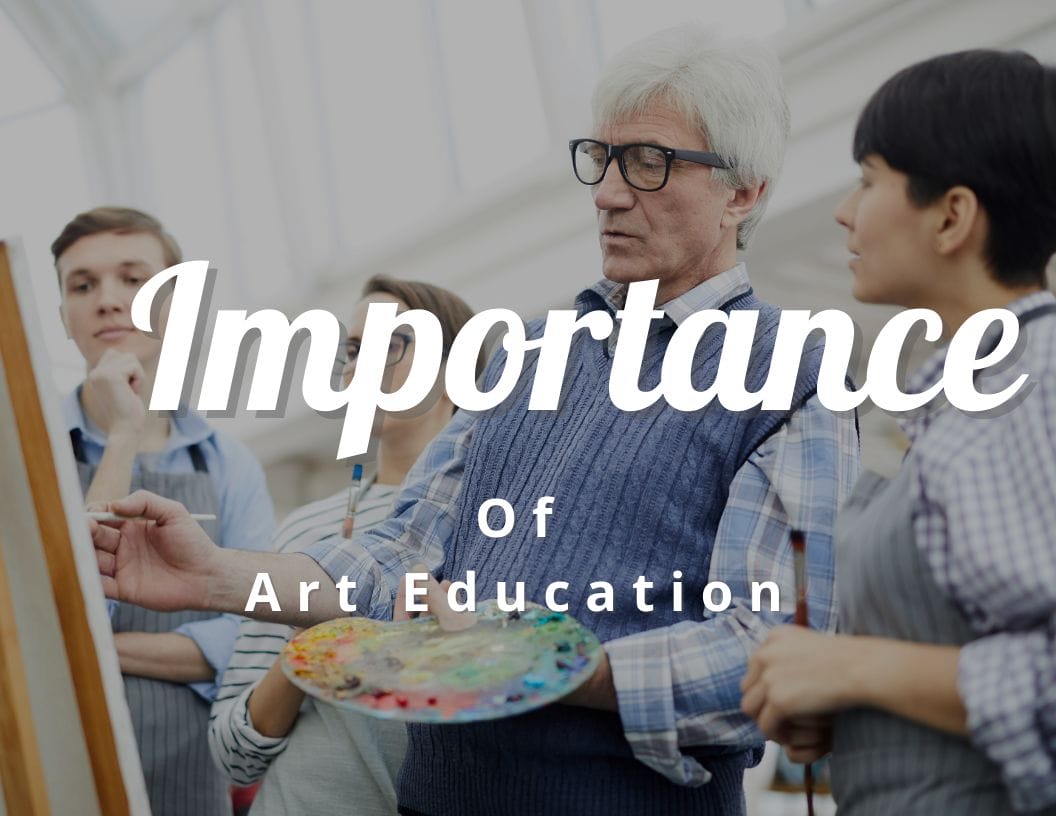
Art Education Importance: Exploring the 15 Benefits of Arts in Schools
Art Educat i on Importance holds a significant place in our education system. It not only enhances creativity and self-expression but also contributes to students’ overall development.
The importance of art education cannot be understated as it fosters critical thinking, teamwork, language skills, and a well-rounded education that includes the arts.
Keep reading to find out more Art Education Importance!
You might also like :
- Fall Picture Ideas
- What is the importance of time?
- What are the types of crafts?
- What is the importance of art in your life?
- 100 joys of life.
- Why reading is important?
- Parent tips.
- Tips to Make Your Child Love Reading
What is Art Education Importance?
Art education importance lies in its ability to foster creativity, critical thinking, and emotional expression, enriching students’ overall learning experience.
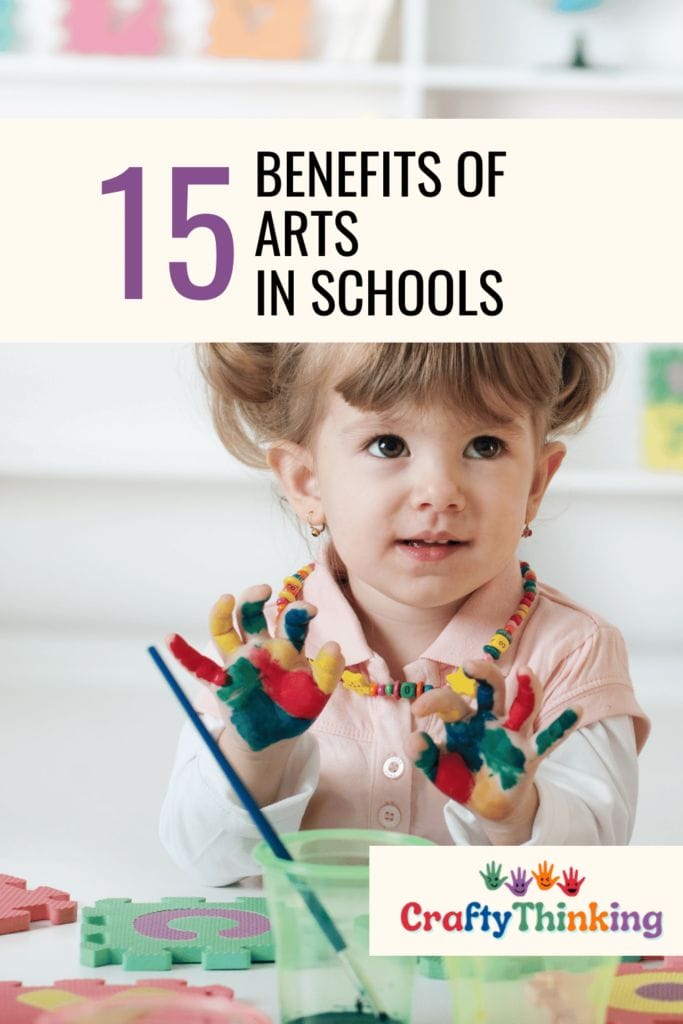
Exploring the 15 Benefits of Arts in Schools
Art isn’t just about colors on a canvas or notes in a melody; it’s a powerful catalyst for holistic growth.
Dive into the vibrant world of arts education as we unravel transformative benefits that are reshaping the academic landscape and molding our future leaders.
Here are 15 amazing benefits of arts in schools:
1. Fosters Creativity
Arts education nurtures creativity, allowing students to explore new concepts and express their unique perspectives.
This creativity often spills over into other academic subjects, promoting innovative thinking.
2. Enhances Cognitive Skills
Research has shown that arts programs can significantly improve students’ cognitive abilities.
Engaging in artistic activities stimulates brain regions involved in memory, attention, and problem-solving.
3. Boosts Academic Performance
Students exposed to arts education often show improved performance in non-arts subjects.
The skills they acquire, such as focus and discipline, benefit their overall academic journey.
4. Develops Emotional Intelligence
Through arts, students learn to express and interpret emotions, leading to heightened emotional intelligence.
This helps them understand themselves and others better.
5. Encourages Cultural Awareness
Arts education introduces students to different cultures, histories, and societal values.
This fosters a sense of respect and appreciation for diverse perspectives.
6. Improves Motor Skills
Activities like drawing, painting, and sculpting enhance fine motor skills, especially in younger children, aiding their physical development.
7. Reduces Disciplinary Infractions
Engaging in arts can lead to better behavior in schools. Students involved in arts programs often show fewer disciplinary issues, as they learn patience, discipline, and teamwork.
8. Enhances Communication Skills
Art education importance, especially in areas like drama or music, improves communication skills.
Students learn to articulate their thoughts and ideas more effectively.
9. Promotes Teamwork
Group projects in arts teach students the value of teamwork.
They learn to collaborate, share ideas, and work towards a common goal.
10. Provides a Medium for Self-expression
Arts offer students a platform to express themselves, helping them deal with emotions, stress, and challenges in a constructive manner.
11. Increases Engagement in School
Arts programs often lead to increased student engagement. The hands-on, interactive nature of arts keeps students interested and motivated.
12. Prepares for Future Careers
While not everyone will pursue a career in arts, the skills acquired, such as creativity, problem-solving, and communication, are valuable in many professions.
13. Builds Resilience and Determination
Arts teach students to persevere. Whether they’re perfecting a piece of art or learning a musical instrument, they learn the value of persistence and determination.
14. Enhances Critical Thinking
Analyzing art, whether it’s literature, visual art, or music, enhances critical thinking.
Students learn to evaluate and interpret artworks, honing their analytical skills.
15. Connects to the Community
Arts programs often involve community projects, exhibitions, or performances.
This not only showcases students’ talents but also strengthens the bond between schools and the community.
Incorporating arts in schools provides a holistic education, ensuring that students are well-rounded, empathetic, and equipped with skills essential for their future.
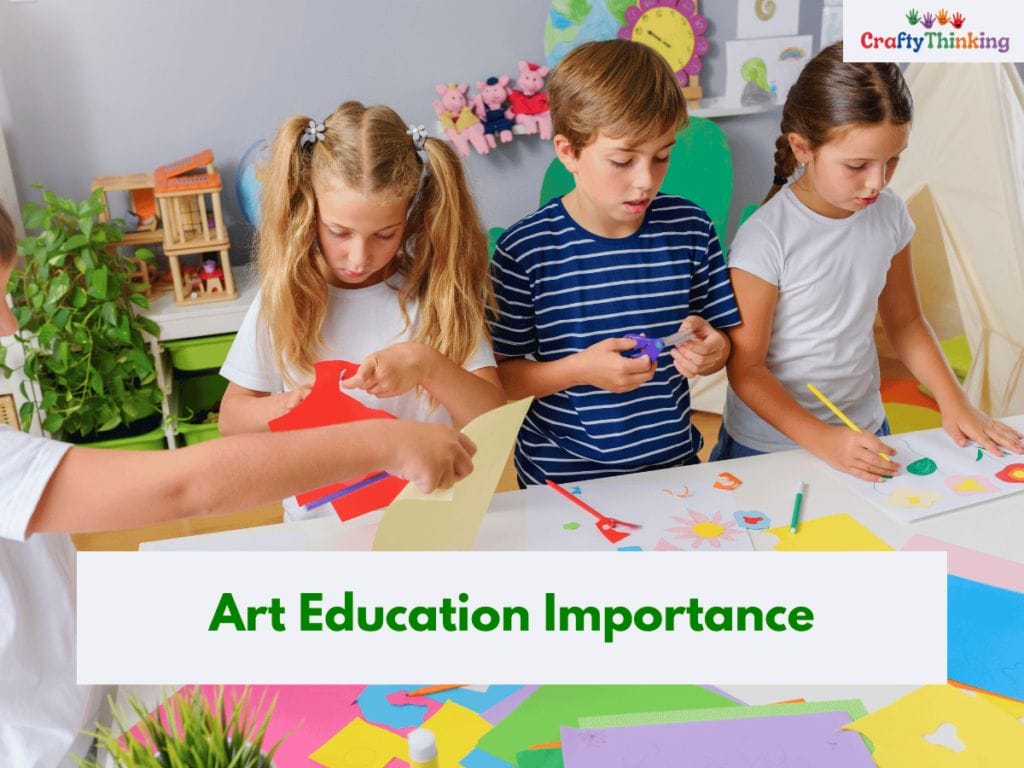
Art Education Importance
Art Education Importance transcends beyond brushes and palettes; it’s the vibrant heartbeat of holistic learning, nurturing creativity, fostering critical thinking, and shaping well-rounded individuals for a dynamic world.
Importance of art education
Art education plays a vital role in fostering creativity and imagination in students.
By encouraging them to explore different art forms, it helps them think outside the box and express their unique ideas.
This kind of creative thinking is valuable in various aspects of life and can lead to innovative problem-solving skills.
Benefits of arts
Apart from the creative aspect, art education also offers several benefits to students.
It helps them develop critical thinking skills and enhance their ability to analyze and interpret visual information.
Moreover, engaging in arts activities can foster self-esteem and confidence, as students gain a sense of achievement through their creative endeavors.
National Endowment for the Arts
The National Endowment for the Arts (NEA) is a federal agency in the United States that supports and funds arts projects and initiatives.
The NEA recognizes the importance of arts education and its positive impact on students’ overall development.
Through their programs and grants, they aim to promote and enhance art education importance in schools across the nation.

How does art education help students?
Art education enhances students’ cognitive abilities, boosts their self-confidence, and provides them with tools to express themselves and interpret the world around them.
Arts integration
Art education goes beyond standalone art classes. It can be integrated into various subjects, such as science, math, and language arts.
By incorporating arts into other subjects, students can develop a deeper understanding of the material and engage in hands-on learning experiences.
This integration promotes interdisciplinary learning and encourages creativity in problem-solving.
Arts teaching teamwork
Collaboration and teamwork are essential skills that students need to cultivate for their personal and professional growth.
Art education provides opportunities for students to work together on group projects, performances, and exhibitions.
This collaborative environment fosters communication, cooperation, and mutual respect among students, preparing them for success in the future.
Language skills through arts
The arts offer a unique platform for students to develop their language skills. Through visual arts, drama, and music, students can express their thoughts and emotions creatively.
Art education encourages students to use descriptive language, expand their vocabulary, and develop their ability to communicate effectively.
These language skills are transferable to other academic areas and contribute to overall literacy development.
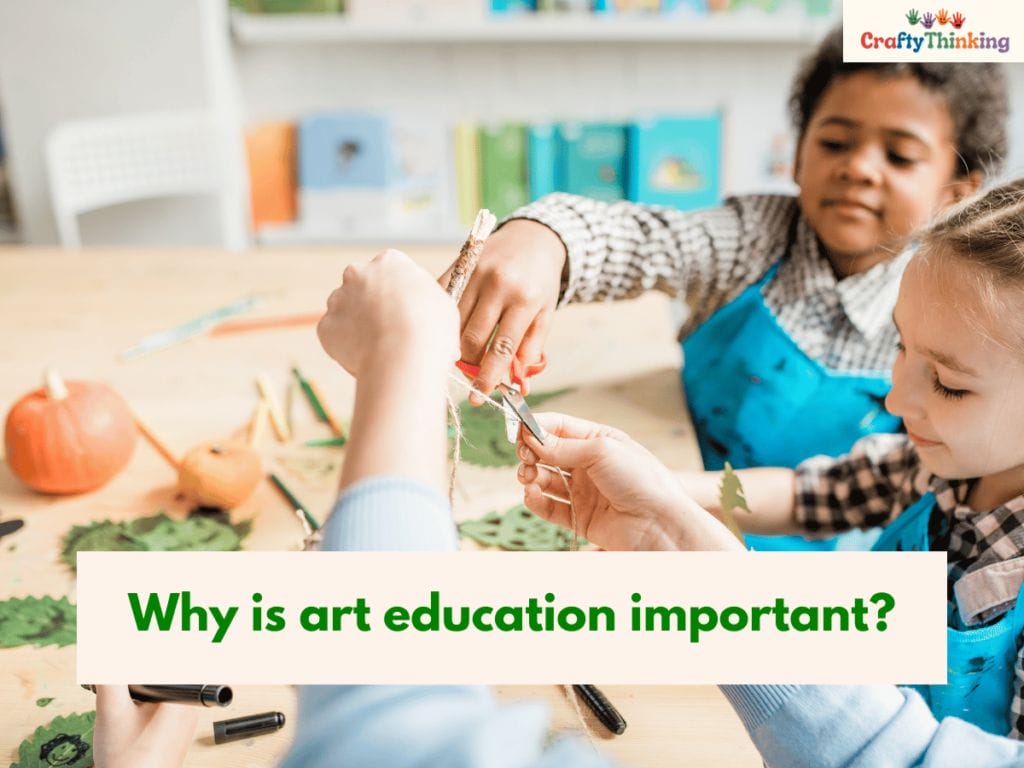
Why is art education important?
Art education is vital as it nurtures creativity, promotes cultural awareness, and develops problem-solving and critical thinking skills, essential for holistic growth.
Americans for the Arts
Americans for the Arts is a leading organization that advocates for the arts and seeks to promote their value and importance in society.
They support art education as an essential part of a well-rounded education, emphasizing its positive impact on students’ intellectual, social, and emotional development.
Through research and advocacy efforts, Americans for the Arts highlight the benefits and value of arts education.
Visual arts in education
Visual arts play a significant role in art education. It encompasses various art forms, including drawing, painting, sculpture, and photography.
Visual arts education helps students develop their observation skills, spatial awareness, and visual thinking abilities.
It encourages them to explore their creativity, experiment with different mediums, and develop their artistic abilities.
Arts learning in K-12 schools
Art education is an essential component of K-12 schools. It provides students with opportunities to explore different art forms, learn about art history and culture, and develop their artistic skills.
By participating regularly in the arts, students develop a sense of appreciation for the arts and gain a deeper understanding of themselves and the world around them.

How does art education contribute to a well-rounded education?
Art education complements traditional subjects by fostering creativity, enhancing cultural appreciation, and promoting emotional and social development, ensuring students receive a comprehensive education.
Academic achievement through arts
Studies have shown a positive correlation between art education and academic achievement. Engaging in arts activities enhances students’ cognitive abilities, such as problem-solving, critical thinking, and spatial reasoning.
The discipline and focus required in art education can translate into improved academic performance and higher test scores in other subjects.
Critical thinking in the arts
The arts foster critical thinking skills as students engage in the process of creating, analyzing, and interpreting art.
They learn to evaluate various artistic choices, develop opinions, and express their ideas effectively.
Critical thinking in the arts encourages students to question assumptions, think critically, and develop a deeper understanding of themselves and the world.
Fostering social and emotional development through arts
Art education provides a platform for students to explore and express their emotions. Through art, they can communicate their feelings, experiences, and perspectives.
This process of self-expression promotes self-awareness, empathy, and a sense of belonging.
Art education also encourages students to appreciate different cultures and perspectives, fostering inclusivity and empathy in the classroom.
Why is Art Education Crucial in the Modern Curriculum?

Art education is pivotal in the modern curriculum because it offers numerous benefits of arts education that go beyond the traditional understanding of fine art.
In U.S. schools, arts programs, supported by arts organizations, provide students with transformative arts experiences that enhance their cognitive, motor skills, and emotional development.
Research by the Department of Education indicates that K-12 arts education fosters a deeper understanding of core academic subjects, helping students grasp new concepts like fraction in math or themes in English language arts.
Furthermore, during the pandemic, arts and culture became a refuge for many, emphasizing the need for vibrant arts programs in learning environments.
How Does Art Education Enhance Students’ Cognitive Abilities?
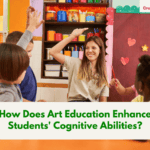
Arts education experiences, whether it’s music and art or hands-on arts projects, stimulate the brain in unique ways.
According to education research, students who engage in arts programs, especially those from underserved communities, show improved academic performance.
The National Association for Music Instruction highlights that music instruction, for instance, aids in the development of spatial intelligence, allowing students to take in and process complex information more effectively.
Moreover, young people who participate regularly in arts activities, even just three hours a day, are more likely to win an award for writing an essay or poem than children who do not participate.
What Role Does the National Endowment for the Arts Play in Promoting Art Education?
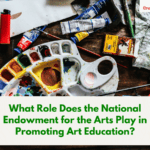
The National Endowment for the Arts (often referred to as the “NEA” or simply “arts and cultural” organizations) plays a pivotal role in promoting arts education in the U.S.
This nonprofit organization collaborates with education leaders, policymakers, and teaching artists to ensure that K-12 students receive quality arts education experiences.
During the COVID-19 pandemic, the NEA emphasized the importance of arts and culture in providing solace and learning opportunities.
They also support initiatives in elementary schools and middle schools, focusing on disciplines like music instruction and fine art, ensuring that no child is left behind when it comes to accessing vibrant arts experiences.
Are There Tangible Benefits to Integrating Arts in School Programs?

Absolutely! Integrating arts in school programs offers a plethora of tangible benefits.
For starters, students exposed to a comprehensive arts program demonstrate fewer disciplinary infractions and show greater compassion for others.
A study by the AEP (Arts Education Partnership) states that young people involved in the arts are more likely to participate in a math and science fair, recognize the value of lifelong learning, and even show enhanced civic engagement.
Furthermore, teaching students through arts can lead to improved motor skills, better decision-making abilities, and an opportunity to reflect on and understand complex societal issues.
Schools with a strong arts foundation, supported by philanthropists and arts organizations, create transformative learning environments that benefit not just the students but the entire community.
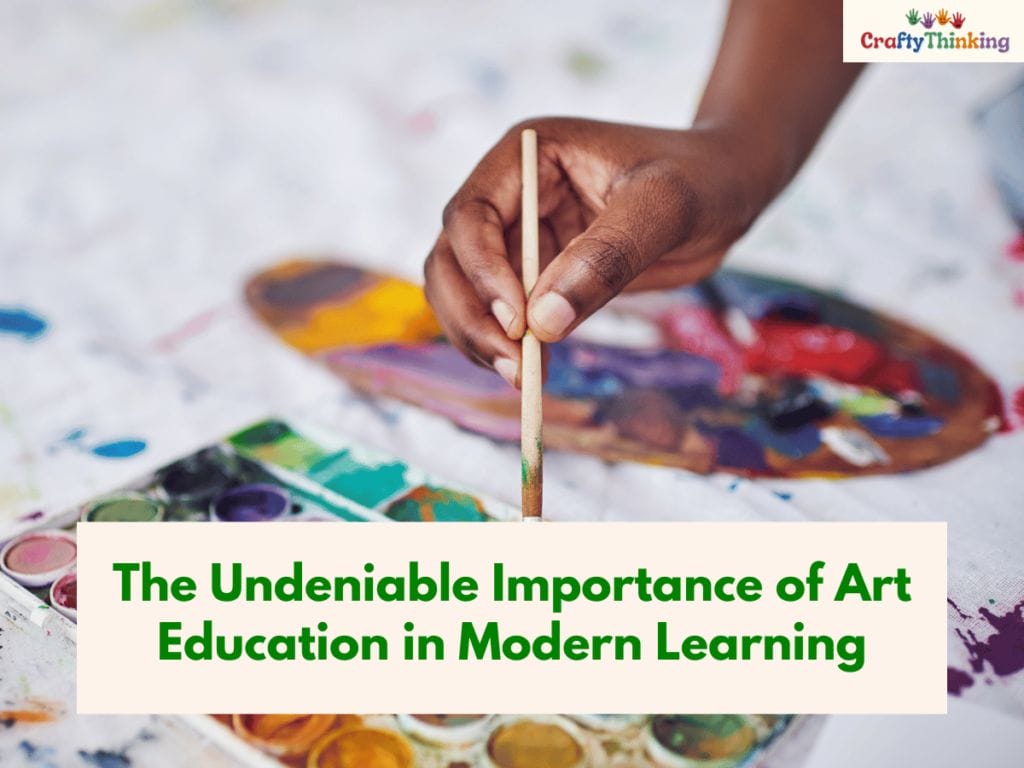
The Undeniable Importance of Art Education in Modern Learning
The importance of art education goes beyond the canvas or stage. It plays a pivotal role in a school’s holistic development approach.
The art’s influence extends to shaping students’ cognitive, emotional, and social growth.
New findings suggest that students exposed to regular art lessons show improved performance even in non-arts subjects.
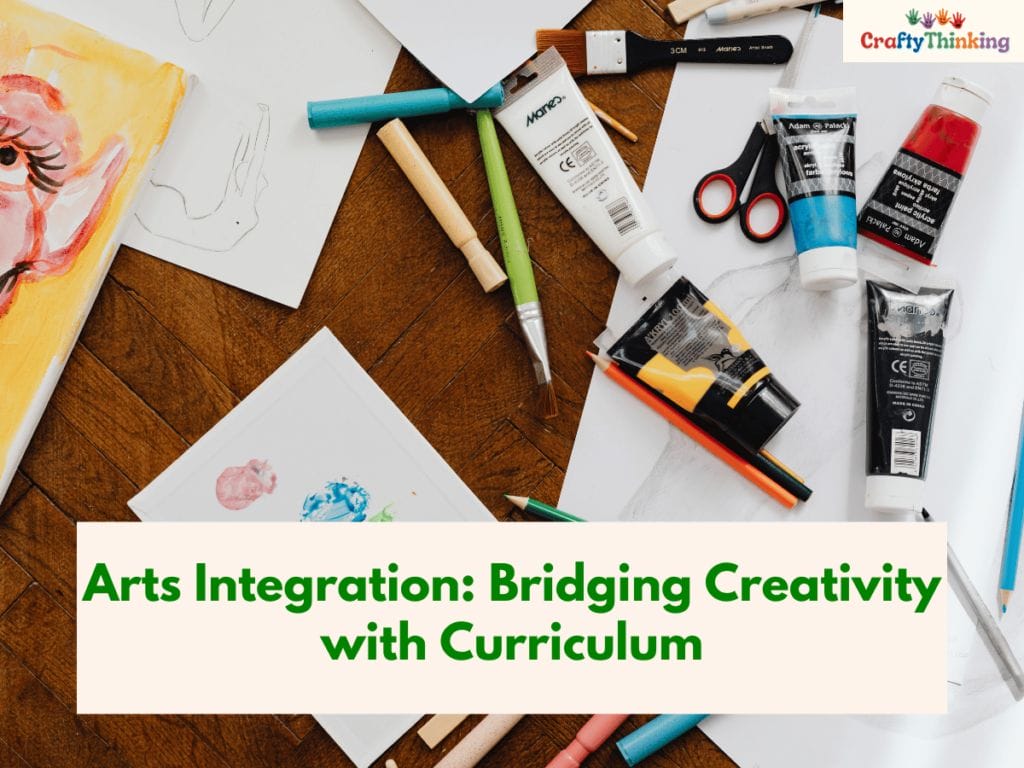
Arts Integration: Bridging Creativity with Curriculum
Arts integration is not just an after-school activity; it’s a transformative approach that intertwines artistic expression with core academic subjects.
Evidence supports that students who experience arts integration in their curriculum have a more profound understanding of topics, as they approach them from diverse perspectives.
Art teachers, with the support of the principal and other decision-makers, are pioneering this integration to ensure no child left behind in their educational journey.
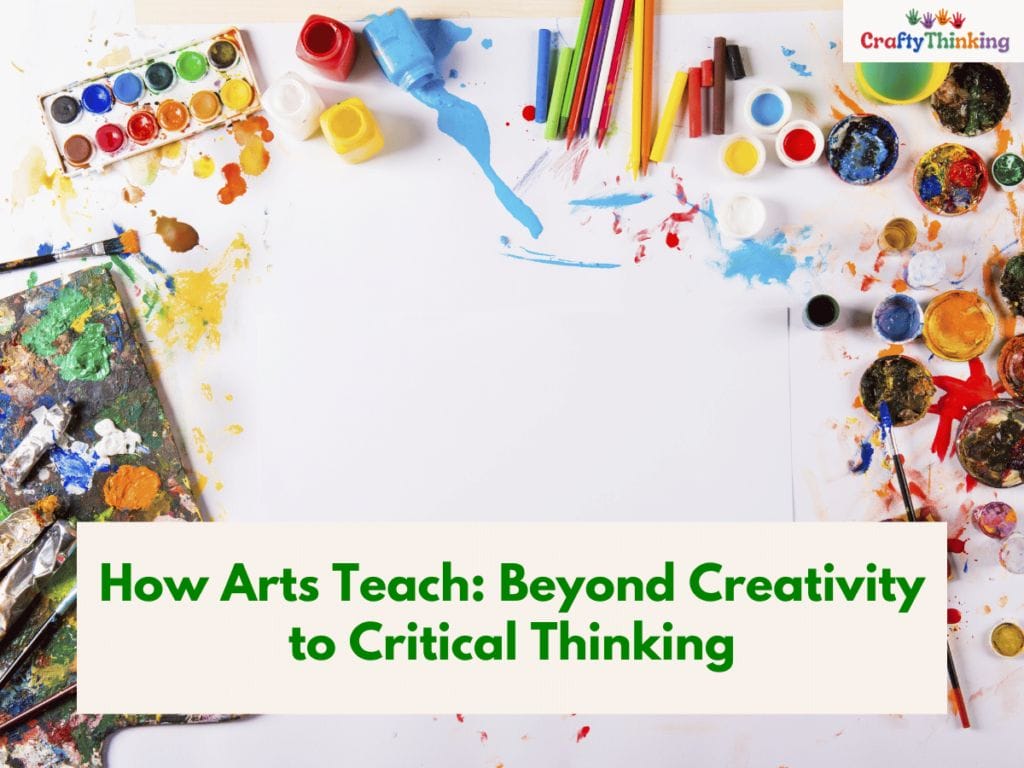
How Arts Teach: Beyond Creativity to Critical Thinking
While arts undeniably foster creativity, their role in teaching critical thinking is often overlooked.
Art teachers have long advocated for the art’s ability to challenge students to think outside the box, analyze complex concepts, and develop solutions in both artistic and non-arts scenarios.
New findings further validate this, highlighting the multifaceted benefits of arts in education.

Teamwork: The Unsung Lesson of Art Education
One of the less celebrated but equally vital lessons from art education is teamwork. Be it a group painting project, a school’s play, or a musical ensemble, students learn the essence of collaboration, understanding, and mutual respect.
The principal and other decision-makers in schools are recognizing this and are increasingly promoting group art projects to instill teamwork values.
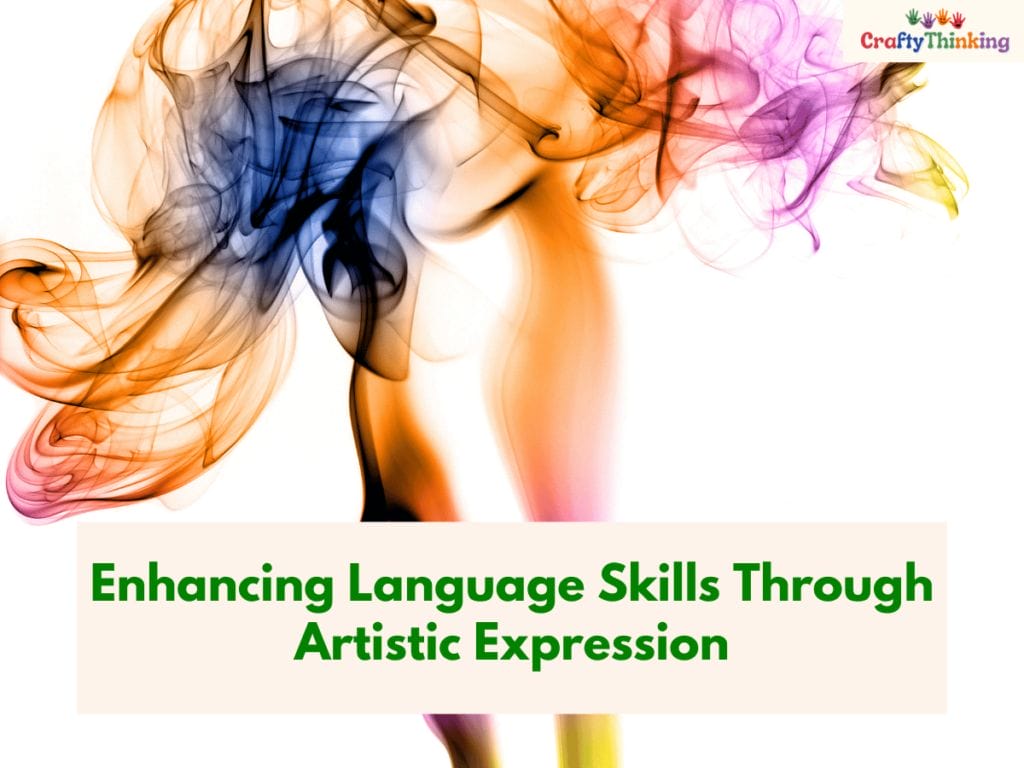
Enhancing Language Skills Through Artistic Expression
Artistic expression is not limited to visual or auditory experiences; it plays a crucial role in enhancing language skills.
Through art, students learn to articulate their thoughts, emotions, and interpretations, enriching their vocabulary and communication skills.
Evidence supports that students engaged in art activities, especially after-school programs, show improved language proficiency, further emphasizing the art’s role in holistic education.
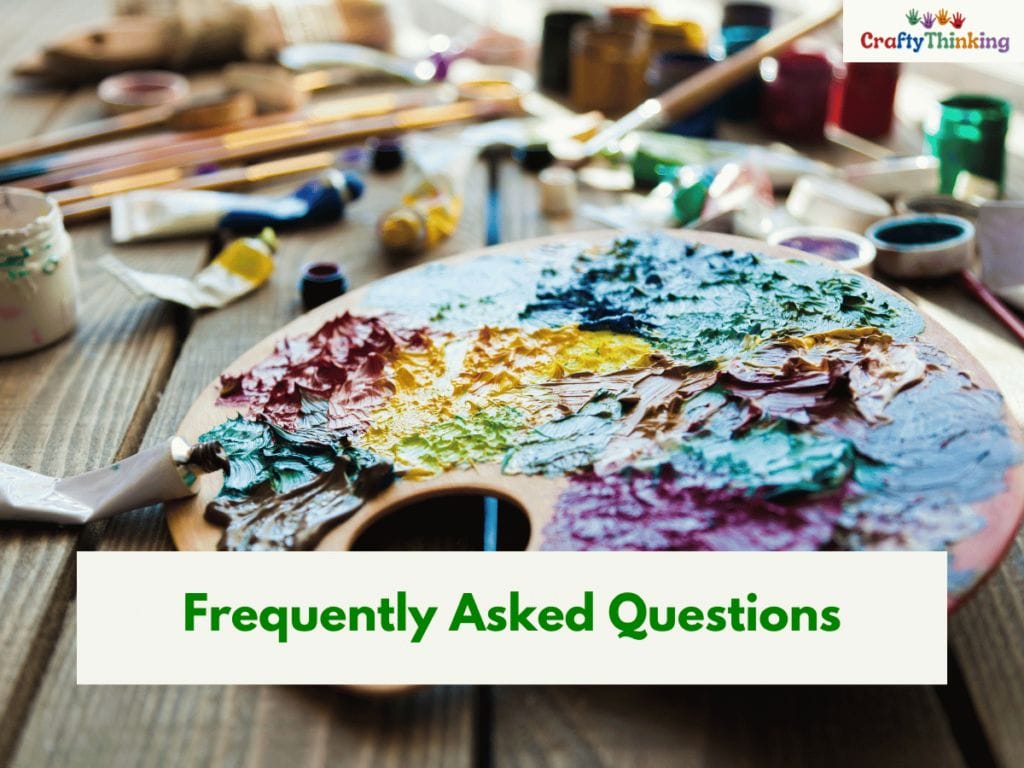
Frequently Asked Questions
Here are some frequently asked questions about Art Education Importance. Get some quick answers to everything you need to know.
What is the importance of art in our life?
Art enriches our lives by allowing self-expression, providing a medium to interpret and understand emotions, and offering a deeper appreciation of diverse cultures and histories.
Why is art important in life?
Art plays a crucial role in life by fostering creativity, providing emotional outlets, and serving as a reflection of societal values and cultural heritage.
How do the arts benefit your children academically and behaviorally?
The arts enhance children’s academic performance by improving their focus and cognitive skills, while behaviorally, they promote discipline, teamwork, and empathy.
Why is art very important in life and society?
Art is pivotal in life and society as it reflects cultural values, addresses societal issues, and fosters community engagement and understanding.
What is the value of art?
The value of art lies in its ability to evoke emotions, provoke thought, reflect culture, and serve as a medium for communication and expression.
How does art connect people?
Art connects people by transcending language barriers, evoking shared emotions, and fostering a sense of community and understanding through shared experiences.
Wrapping Up Art Education Importance
In the tapestry of modern education, the threads of Art Education Importance are woven deeply, creating patterns of growth, creativity, and resilience.
As we’ve journeyed through the myriad benefits, it’s evident that Art Education Importance is not just a supplementary subject; it’s a cornerstone of holistic learning.
In a world constantly evolving, let’s champion Art Education Importance, ensuring our students are equipped with the skills, empathy, and creativity to shape a brighter future.
If you enjoyed this article about Art Education Importance and would like to learn more, please leave a comment below.
Like and Share!

- Ideas for Action
- Join the MAHB
- Why Join the MAHB?
- Current Associates
- Current Nodes
- What is the MAHB?
- Who is the MAHB?
- Acknowledgments
Problems, Problem Solving, and Education: An Inquiry into “Convention” as a Problem and What We Might Do About It
| April 21, 2024 | Leave a Comment

Digits.co.uk Images, CC BY 2.0 , via Wikimedia Commons
Item Link: Access the Resource
File: Download
Date of Publication: March 6
Year of Publication: 2024
Publication City: Bethlehem, PA
Publisher: The Mother's Service Society
Author(s): Susan G. Clark
Journal: Cadmus
Adequately responding to our deteriorating environmental and social situation is a matter of increasing urgency. An obstacle to achieving a concerted response is the way that we have normalized “convention,” or as some authors claim “thoughtless convention.” The author takes on this obstacle (i.e., convention, thoughtlessness) as the primary subject of this paper. We all live in the everyday, averaged-off way things are done, understood, and thought about in our respective cultures (this is convention). Problems are typically framed, embodied, and emplaced from within convention using a “metaphysics of control and mastery or dominance” over the biophysical world. Conventionally, this is the doctrine of scientific positivism mixed with neoliberal capitalistic economics. It plays out in complex ways with consequences. Too often, this approach blocks what should count as our appropriate relationship (“sustainability,” coexistence) with the world, including nonhuman life.
Accepting convention (status quo), which is very widely accepted, absolves us from thinking too deeply or looking at ourselves and our problems. This doctrine keeps us in a certain kind of dialectic of the “practical,” concrete, and literal. In turn, this translates into the present social and political organization of our culture, problem-solving heuristics, and academic curriculums. As a deeply rooted psychological mindset and way to frame problems, convention serves as an existential coping mechanism to avoid examination of self and culture, actual problems, and a way to reject promising alternatives, especially integrative functional approaches. Perhaps convention is so widespread because of these evolutionary/psychological dynamics and because there are so many problems—personal to global—that we do not understand or know how to address. Consequently, it is extremely hard to even question the pervasive conventional framing of our situation and current entrenched thought and operations. Fortunately, some people move beyond convention integrating conventional and functional understandings to address problems. An integrative standpoint looks for connections, relationships, and systems properties across social processes and decision-making. It offers a way to orient to problems more reliably than convention allows.
Frameworks exist for integration that have proven helpful. As an inquiry into convention, the author looks at our contemporary problems, our evolutionary history, problem-solving, the academy, and education, and offers a brief overview. Recommendations are about (1) helping people, leaders, and institutions, (2) learning integrative concepts and operations for effectively orienting to problems, functionally in realistic and pragmatic ways, and, (3) developing education in the academy to upskill students and address problems. The future, our global solidarity, and any global movements to address problems will depend on the learning and transformations we can bring about.
Read the full paper here or download it from the link above.
2024 Global Learning Challenge
Art and music seeds: popular and technological education for the development of children
Maly Puerto
Our Organization
Fundación Taller Sembrando Amor y Granada Semillero de Arte (Sowing Love Workshop Fundation and Granada Art Nursery)
What is the name of your solution?
Provide a one-line summary of your solution..
Educación popular para creación artística / musical y su divulgación digital en 2 comunidades vulnerables de Colombia y México
In what city, town, or region is your solution team headquartered?
In what country is your solution team headquartered, what type of organization is your solution team, what specific problem are you solving.
Music and art not only distinguish us from other living beings but also serve as powerful vehicles for developing competencies and conveying messages, particularly in childhood. Children are born with immature brains, and their sensory and motor development relies on external influences. Studies, such as the one underlying the so-called "Mozart effect," establish the relationship between reasoning and music. Researcher Robert Sylwester (1998) suggests that the arts may have emerged to develop and maintain mental, auditory, and sensory capacities. Since Plato's time, the Greek philosopher argued that art should form the basis of education. This truth remains relevant, especially in today's world, where creativity becomes a fundamental skill in light of technological advancements. According to a study published in the journal Nature by Egana del Sol, art can enhance students' creativity and creative behaviors. Moreover, art helps close social gaps. Research, like that conducted by the National Endowment for the Arts, indicates that arts education narrows gaps among students from diverse social backgrounds and increases the likelihood of completing secondary education and pursuing higher education.
However, profound disparities in education quality persist worldwide, particularly evident in Latin America, especially regarding art and music. According to a study by the Inter-American Development Bank conducted by Duarte and colleagues, music facilities in schools are scarce. Regrettably, human education in arts and music isn't considered a measure of education quality, at least according to evaluations like PISA and UNESCO's education quality and inclusion monitoring. In Colombia, despite constitutional provisions, arts education has been overlooked in political decisions for decades, as noted in the document "Pedagogy for Thought, a Proposal from Dance and Theater" by the national teaching staff. Data regarding education access are scarce or difficult to obtain, yet our observations show that arts education predominantly benefits those who can afford it, with state-funded programs rarely reaching remote communities. This urgent need is echoed by approximately 30 children who've participated in our music and art programs, alongside many others we've been unable to reach due to operational constraints.
Moreover, technology's pervasive presence in daily life suggests that access to it equates to access to culture. However, this underscores the globalization of musical and artistic culture, which, despite its benefits, often sidelines local cultural nuances. Consequently, children lack the tools to validate their cultural identities and feel pride in their heritage. Technology, if harnessed correctly, could amplify local artistic projects through channels that currently globalize commercial artistic products.
What is your solution?
Artistic training in musical creation, vocal technique, and percussion and string instruments. In this component, we will enhance vocal classes and the drums we already have to reach more students in our community. We will recover guitar classes and create classes for musical composition. We aim to reach children in our suburban and rural community of Duitama and, through our allies, reach vulnerable children in suburban communities of Mexico City.It is also to be noted that we are currently developing song creation classes and we are focusing them in water and environmental messages. In our solutions we want to continue our efforts of helping children to transmit their voice in crucial environmental and social themes through their art.
Artistic training for creating graphic pieces to accompany the music created, either as part of accompanying videos or through live presentations where the generated creation is projected. This will be done through physical drawings and drawings with the support of technology.
Training in creating musical instruments such as drums and strings from recovered materials. This training is based on the experience accumulated by our allies in Mexico and the competencies of our team of environmental educators in Colombia.
Digital training for creating pieces, musical cultural exchange, and audience projection. We will teach our young ones to record videos and audio and upload them to digital platforms like YouTube. We will also organize presentations for our local audiences, using digital platforms and tools that allow us to offer them an intercultural experience. For example, from Colombia, we can project the art of our young ones in Mexico, and in Mexico, they can listen to us while watching the artist's drawing being staged.
Lastly, and transversally, our solution has the characteristic co-creation approach of popular education. The artistic and musical creations will be built with the children of our communities. The teachers accompanying the processes are close to these communities or even residents of the same territories. We prioritize the co-creation process over commercial product because at the end of the day, our audiences are our very own participating community, and we aim for these exercises to empower them, acquire new skills, and weave community and life in novel and dignified ways.
Who does your solution serve, and in what ways will the solution impact their lives?
In the short term, our solution will serve approximately one hundred children per year and their families in suburban and rural areas of Duitama, Colombia, and Ciudad de Mexico. We expect that the MIT Solve training will allow us to better define the scope in the medium and long term.
These children currently lack access to comprehensive arts education opportunities, particularly in music, visual arts, and digital creativity. Moreover, profound disparities in arts education exist in both countries. Access to musical instruments, vocal training, and artistic resources is uncommon, as is the understanding and use of digital tools and platforms for creative expression beyond a spectator point of view.
Our solution will provide access to popular training in different disciplines related to music, arts, and digital tools. We prioritize the co-creation of artistic expressions, fostering local talent in training classes, and maintaining a sustainable focus on materials used in some of our instruments, which are elaborated by our own students. Additionally, our educators value local and Latin American sounds and will incorporate them into our methodologies to promote local cultural appreciation.
Participants will benefit from increased confidence through exposure to audiences, improved competence in expressing themselves through artistic manifestations, and the strengthening of skills such as creativity and problem-solving. We also aim to expand the horizons and aspirations of our children regarding their futures, making cultural careers seem attainable regardless of their social backgrounds. Moreover, we expect that the cultural exchange facilitated by our program will broaden their perspectives, allowing them to forge bonds across geographical barriers. In the medium term, we hope to expand our reach and serve more communities, further enhancing cultural exchange opportunities.
Additionally, we anticipate that communities, including adults and neighborhoods, will strengthen their bonds as they witness the wonderful presentations of community children and the projection of their talents beyond. This will help garner continued support from popular educators and the community for the various activities required to foster a sense of belonging and solidarity.
How are you and your team well-positioned to deliver this solution?
Fundación Taller Sembrando Amor is a non-profit organization with 4 years of experience in popular education; 3 as popular process and 1 as fundation. Two of its four founders and proponents of this project are residents of the communities we serve. Our activities have gradually expanded, always with active involvement from the communities we benefit. The same communities provide the spaces for our workshops, often in communal halls. Additionally, our legal representative is part of the communal committee.Our teachers are from the same city, usually from the same neighborhood, and they provide their teachings voluntarily or at reduced rates. Each class is tailored to the interests of our children and the expertise of our teachers. All the classes integrated into this creative project have been tested in previous years with our community and are constructed around a co-creative process. For example, we have classes on vocal technique where children contribute to co-create songs about water and the environment. We also offer reading and poetry classes, during which children construct their own poems, which can serve as precursors to music lyrics. We take into account local creators and music to inspire our children
Which dimension of the Challenge does your solution most closely address?
Which of the un sustainable development goals does your solution address.
- 4. Quality Education
- 10. Reduced Inequalities
- 17. Partnerships for the Goals
What is your solution’s stage of development?
Please share details about why you selected the stage above..
We are in the pilot phase as our project has already been launched in one community. Currently, we are operating in Duitama, Boyacá, with approximately 30 beneficiaries participating in classes on vocal technique, drums, and poetry creation. Fundación Taller Sembrando Amor and La Granada have previously offered free classes for vulnerable communities in arts, drawing, photography, and guitar; hence, we have tested them and have the necessary expertise within our teams. However, we still need to iterate and strengthen our design to ensure consistency, foster alliances, and extend our reach to more communities in different countries.
Why are you applying to Solve?
We are applying to Solve because the program offers a perfect combination of the support we urgently need to scale our impact. Our project, Art and music seeds: popular and technological education for the development of children, aligns with Solve's mission of providing people skills that they need to thrive in their communities and the world. Despite relying heavily on volunteers with valuable expertise in music, arts, and the support of environmental specialist and social workers, we've already achieved that our classes achieve around 30 kids, during a year, and presenting their achievements to local audiences wining a second place in a municipal contest of music. However, scaling effectively has proven challenging due to a lack of managerial and financial resources. Solve's funding, personalized support, and access to a network of social impact leaders would be instrumental. We are a highly dedicated team with a proven track record, and with the right guidance, we are confident we can achieve outstanding results in our communities.
In which of the following areas do you most need partners or support?
- Monitoring & Evaluation (e.g. collecting/using data, measuring impact)
- Product / Service Distribution (e.g. delivery, logistics, expanding client base)
- Public Relations (e.g. branding/marketing strategy, social and global media)
- Technology (e.g. software or hardware, web development/design)
Who is the Team Lead for your solution?
What makes your solution innovative.
Reaching communities that typically lack access to technology, or where access is limited to passive consumption and not to active creation. Also, by leveraging digital platforms for audience projection and cultural exchange, we can extend our impact globally.
We are harnessing technology as an ally of the arts, combining traditional education with digital tools and platform. By merging modern and traditional expressions, we can teach technology without sacrificing the personal connection and intimacy fostered through face-to-face interaction.
Our approach also includes elements of traditional technology, such as constructing instruments from recovered materials. Additionally, we celebrate local rhythms and traditions by incorporating them into the creation of some of our songs. This blend of tradition and innovation enriches the learning experience and preserves cultural heritage.
Describe in simple terms how and why you expect your solution to have an impact on the problem.
Our inputs are:
Digital skills workshops directed to manage open source or low cost tools to produce video, photo and music and to distribute it in digital platforms for children
Traditional craftsmanships workshops sessions for building instruments from locally recovered materials for children
Arts and music courses on vocal technique, guitar, drums, and songs elaboration, taking into account local rythms and cultural heritage as well and likes of children. It includes involving local artist and educators as mentors and facilitators.
Facilitation of events and cultural exchange, initially virtual events between communities in Colombia and Mexico
Promotion and marketing for selling cultural products and concerts to local interested parties
Our outputs are:
children benefited with new knowledge about music, arts, and digital tools through a number of workshops conducted.
Songs and video songs produced by our children and available to wider audiences through web platforms
Concerts with self made songs and artistic displays, combining countries’ results
Our first outcome is to improve skills of children in disadvantaged contexts, increasing their cognitive, problem-solving and creativity skills, key in the current world
Our second outcome is to improve community bonds, and pride in cultural heritage
What are your impact goals for your solution and how are you measuring your progress towards them?
Describe the core technology that powers your solution..
For the first outcome, which focuses on improving the skills of children in disadvantaged contexts, including cognitive, problem-solving, and creativity skills, we recognize the critical importance of equipping the next generation with the tools they need to thrive in the modern world. To measure our progress towards this goal, we currently employ a combination of observation, parent feedback, and follow-up teacher’s assessments to track the development of each child. Moving forward, we aim to further enhance our understanding through the inclusion of focus groups, providing valuable insights into the experiences and needs of both children and their families.
Our second outcome centers on enhancing community bonds and fostering pride in cultural heritage, recognizing the profound impact that strong community connections and cultural identity can have on overall well-being. Currently, we rely on direct feedback from parents and community members to assess our progress in this area. However, we recognize the importance of capturing a diverse range of perspectives and experiences. To this end, we plan to incorporate wider and standardized surveys, as well as conduct focus groups with representatives from across the community. Additionally, we will leverage feedback from digital products to further enhance our understanding of community engagement and cohesion.
As we continue our journey, we remain committed to ongoing monitoring and evaluation, ensuring that our solution continues to deliver meaningful impact and drive positive change in the lives of those we serve.
Which of the following categories best describes your solution?
A new business model or process that relies on technology to be successful
Please select the technologies currently used in your solution:
- Ancestral Technology & Practices
- Audiovisual Media
- Crowd Sourced Service / Social Networks
If your solution has a website or an app, provide the links here:
https://www.instagram.com/popular.sembrandoamor/
In which countries do you currently operate?
Which, if any, additional countries will you be operating in within the next year, how many people work on your solution team.
full-time staff: 1
Yamile Ortiz (CO)
part-time staff: 3
Maly Puerto (CO)
Arturo Benitez (MX)
Pedro Avila (MX)
Camila Dosamantes Curzio (MX)
contractors (currently volunteers): 4 teachers (CO)
How long have you been working on your solution?
4 years as communitary effort, 1 year as foundation.
Tell us about how you ensure that your team is diverse, minimizes barriers to opportunity for staff, and provides a welcoming and inclusive environment for all team members.
Through alliances and selecting expert partners, taking into account gender equity and intersectionalities.
What is your business model?
Our user value proposition is to increase quality education through music and arts, enhancing skills like creativity, problem-solving, and emotional expression, which are essential in today's world. Our impact measurement includes tracking the number of children with increased skills in music and digital arts. Additionally, we utilize qualitative methods such as performance evaluations, feedback from parents and teachers, and focus groups to assess the effectiveness of our solution.
Our customer value proposition revolves around providing access to cultural offerings that enhance the quality of children's education. Our target segments include children from vulnerable backgrounds with limited access to cultural education, as well as socially conscious individuals who appreciate concerts and art demonstrations.
Our intervention type is a cultural service, with key activities encompassing music and art classes, digital tools and media classes, cultural events, and the elaboration of artistic content on social media platforms.
We rely on key resources such as editing programs like Canva, Audacity, Reaper, and Capcut, as well as social media platforms for content dissemination. For events, we utilize sound and lighting equipment, internet access, and projectors, while classrooms and instruments/tools are essential for conducting classes. Our partners and key stakeholders include teachers and event location administrators.
In terms of our cost structure, expenses cover staff salaries, e-tools licenses, sound and lighting equipment for events, and devices for audio and video production. Any surplus generated will be reinvested in acquiring video and sound devices, expanding classroom facilities, and hiring additional staff.
We anticipate revenue streams from various sources, including 50% from events, 40% from workshops and courses, and 10% from social media publicity efforts.
Do you primarily provide products or services directly to individuals, to other organizations, or to the government?
What is your plan for becoming financially sustainable, and what evidence can you provide that this plan has been successful so far.
Our financial sustainability plan is founded on a combination of revenue streams and strategic partnerships. In addition to selling tickets to performances and offering classes for children who can afford them, we plan to diversify our income sources by offering online workshops and courses, and seeking grants from philanthropic organizations.
One significant success story that exemplifies our approach is our participation in last year's "Carol Singing Competition" organized by the municipality. Our children trained diligently for over 10 months in preparation for this event. We were thrilled to receive a cash prize, which not only provided much-needed funds but also validated the hard work and dedication of our students and teachers. The prize money allowed us to purchase materials to continue our educational mission and cover a portion of a teacher's salary for one month.
Furthermore, our visibility from participating in the competition has attracted interest from private organizations. We performed at one such organization last year, laying the groundwork for potential future collaborations. We are actively pursuing partnerships with local companies interested in expanding their social responsibility initiatives, as well as other cultural enterprises seeking joint initiatives.
In Colombia, there are tax incentives for donors of authorized non-profits like ours. Donating to certified non-profits allows both individuals and companies to reduce their income tax bill. Companies can deduct up to 30% of their donation, while individuals receive a 25% discount on their tax bill. This incentivizes support for organizations like ours, further enhancing our financial sustainability.
Looking ahead, our long-term sustainability strategy involves continued diversification of revenue streams, prudent financial management, and strategic partnerships. We aim to scale our programs by leveraging online platforms and expanding our reach to new audiences. Additionally, we will focus on building a robust network of supporters, including individual donors, philanthropic organizations, and corporate partners, to ensure sustained funding for our mission-driven activities. By prioritizing innovation, collaboration, and fiscal responsibility, we are confident in our ability to thrive and make a lasting impact on the communities we serve.
Solution Team
The Solve team will review your report and remove any inappropriate content.
Why is this item inappropriate?
We use cookies.
We use cookies and other tracking technologies to improve your browsing experience on our website and to understand where our visitors are coming from. By browsing our website, you consent to our use of cookies and other tracking technologies.
- Articles >
The Moscow Metro Museum of Art: 10 Must-See Stations
There are few times one can claim having been on the subway all afternoon and loving it, but the Moscow Metro provides just that opportunity. While many cities boast famous public transport systems—New York’s subway, London’s underground, San Salvador’s chicken buses—few warrant hours of exploration. Moscow is different: Take one ride on the Metro, and you’ll find out that this network of railways can be so much more than point A to B drudgery.
The Metro began operating in 1935 with just thirteen stations, covering less than seven miles, but it has since grown into the world’s third busiest transit system ( Tokyo is first ), spanning about 200 miles and offering over 180 stops along the way. The construction of the Metro began under Joseph Stalin’s command, and being one of the USSR’s most ambitious building projects, the iron-fisted leader instructed designers to create a place full of svet (radiance) and svetloe budushchee (a radiant future), a palace for the people and a tribute to the Mother nation.
Consequently, the Metro is among the most memorable attractions in Moscow. The stations provide a unique collection of public art, comparable to anything the city’s galleries have to offer and providing a sense of the Soviet era, which is absent from the State National History Museum. Even better, touring the Metro delivers palpable, experiential moments, which many of us don’t get standing in front of painting or a case of coins.
Though tours are available , discovering the Moscow Metro on your own provides a much more comprehensive, truer experience, something much less sterile than following a guide. What better place is there to see the “real” Moscow than on mass transit: A few hours will expose you to characters and caricatures you’ll be hard-pressed to find dining near the Bolshoi Theater. You become part of the attraction, hear it in the screech of the train, feel it as hurried commuters brush by: The Metro sucks you beneath the city and churns you into the mix.
With the recommendations of our born-and-bred Muscovite students, my wife Emma and I have just taken a self-guided tour of what some locals consider the top ten stations of the Moscow Metro. What most satisfied me about our Metro tour was the sense of adventure . I loved following our route on the maps of the wagon walls as we circled the city, plotting out the course to the subsequent stops; having the weird sensation of being underground for nearly four hours; and discovering the next cavern of treasures, playing Indiana Jones for the afternoon, piecing together fragments of Russia’s mysterious history. It’s the ultimate interactive museum.
Top Ten Stations (In order of appearance)
Kievskaya station.

Kievskaya Station went public in March of 1937, the rails between it and Park Kultury Station being the first to cross the Moscow River. Kievskaya is full of mosaics depicting aristocratic scenes of Russian life, with great cameo appearances by Lenin, Trotsky, and Stalin. Each work has a Cyrillic title/explanation etched in the marble beneath it; however, if your Russian is rusty, you can just appreciate seeing familiar revolutionary dates like 1905 ( the Russian Revolution ) and 1917 ( the October Revolution ).
Mayakovskaya Station
Mayakovskaya Station ranks in my top three most notable Metro stations. Mayakovskaya just feels right, done Art Deco but no sense of gaudiness or pretention. The arches are adorned with rounded chrome piping and create feeling of being in a jukebox, but the roof’s expansive mosaics of the sky are the real showstopper. Subjects cleverly range from looking up at a high jumper, workers atop a building, spires of Orthodox cathedrals, to nimble aircraft humming by, a fleet of prop planes spelling out CCCP in the bluest of skies.
Novoslobodskaya Station

Novoslobodskaya is the Metro’s unique stained glass station. Each column has its own distinctive panels of colorful glass, most of them with a floral theme, some of them capturing the odd sailor, musician, artist, gardener, or stenographer in action. The glass is framed in Art Deco metalwork, and there is the lovely aspect of discovering panels in the less frequented haunches of the hall (on the trackside, between the incoming staircases). Novosblod is, I’ve been told, the favorite amongst out-of-town visitors.
Komsomolskaya Station
Komsomolskaya Station is one of palatial grandeur. It seems both magnificent and obligatory, like the presidential palace of a colonial city. The yellow ceiling has leafy, white concrete garland and a series of golden military mosaics accenting the tile mosaics of glorified Russian life. Switching lines here, the hallway has an Alice-in-Wonderland feel, impossibly long with decorative tile walls, culminating in a very old station left in a remarkable state of disrepair, offering a really tangible glimpse behind the palace walls.
Dostoevskaya Station

Dostoevskaya is a tribute to the late, great hero of Russian literature . The station at first glance seems bare and unimpressive, a stark marble platform without a whiff of reassembled chips of tile. However, two columns have eerie stone inlay collages of scenes from Dostoevsky’s work, including The Idiot , The Brothers Karamazov , and Crime and Punishment. Then, standing at the center of the platform, the marble creates a kaleidoscope of reflections. At the entrance, there is a large, inlay portrait of the author.
Chkalovskaya Station
Chkalovskaya does space Art Deco style (yet again). Chrome borders all. Passageways with curvy overhangs create the illusion of walking through the belly of a chic, new-age spacecraft. There are two (kos)mosaics, one at each end, with planetary subjects. Transferring here brings you above ground, where some rather elaborate metalwork is on display. By name similarity only, I’d expected Komsolskaya Station to deliver some kosmonaut décor; instead, it was Chkalovskaya that took us up to the space station.
Elektrozavodskaya Station

Elektrozavodskaya is full of marble reliefs of workers, men and women, laboring through the different stages of industry. The superhuman figures are round with muscles, Hollywood fit, and seemingly undeterred by each Herculean task they respectively perform. The station is chocked with brass, from hammer and sickle light fixtures to beautiful, angular framework up the innards of the columns. The station’s art pieces are less clever or extravagant than others, but identifying the different stages of industry is entertaining.
Baumanskaya Statio
Baumanskaya Station is the only stop that wasn’t suggested by the students. Pulling in, the network of statues was just too enticing: Out of half-circle depressions in the platform’s columns, the USSR’s proud and powerful labor force again flaunts its success. Pilots, blacksmiths, politicians, and artists have all congregated, posing amongst more Art Deco framing. At the far end, a massive Soviet flag dons the face of Lenin and banners for ’05, ’17, and ‘45. Standing in front of the flag, you can play with the echoing roof.
Ploshchad Revolutsii Station

Novokuznetskaya Station
Novokuznetskaya Station finishes off this tour, more or less, where it started: beautiful mosaics. This station recalls the skyward-facing pieces from Mayakovskaya (Station #2), only with a little larger pictures in a more cramped, very trafficked area. Due to a line of street lamps in the center of the platform, it has the atmosphere of a bustling market. The more inventive sky scenes include a man on a ladder, women picking fruit, and a tank-dozer being craned in. The station’s also has a handsome black-and-white stone mural.
Here is a map and a brief description of our route:
Start at (1)Kievskaya on the “ring line” (look for the squares at the bottom of the platform signs to help you navigate—the ring line is #5, brown line) and go north to Belorusskaya, make a quick switch to the Dark Green/#2 line, and go south one stop to (2)Mayakovskaya. Backtrack to the ring line—Brown/#5—and continue north, getting off at (3)Novosblodskaya and (4)Komsolskaya. At Komsolskaya Station, transfer to the Red/#1 line, go south for two stops to Chistye Prudy, and get on the Light Green/#10 line going north. Take a look at (5)Dostoevskaya Station on the northern segment of Light Green/#10 line then change directions and head south to (6)Chkalovskaya, which offers a transfer to the Dark Blue/#3 line, going west, away from the city center. Have a look (7)Elektroskaya Station before backtracking into the center of Moscow, stopping off at (8)Baumskaya, getting off the Dark Blue/#3 line at (9)Ploschad Revolyutsii. Change to the Dark Green/#2 line and go south one stop to see (10)Novokuznetskaya Station.
Check out our new Moscow Indie Travel Guide , book a flight to Moscow and read 10 Bars with Views Worth Blowing the Budget For
Jonathon Engels, formerly a patron saint of misadventure, has been stumbling his way across cultural borders since 2005 and is currently volunteering in the mountains outside of Antigua, Guatemala. For more of his work, visit his website and blog .

Photo credits: SergeyRod , all others courtesy of the author and may not be used without permission
- Share full article
Advertisement
Subscriber-only Newsletter
To Fight Climate Change, We Need New ‘Political Technologies’

By Peter Coy
Opinion Writer
Science alone won’t stop the planet from overheating. But science coupled with political science just might.
That’s the theme of a new book, “Long Problems: Climate Change and the Challenge of Governing Across Time.” It’s by Thomas Hale, an American political scientist who teaches at the University of Oxford’s Blavatnik School of Government.
Hale argues that people are too quick to throw up their hands because the political will to stop climate change is lacking. For political scientists, he writes, “this is not the end but rather the start of the intellectual challenge.”
Hale has specific ideas for how to change institutions and procedures so that today’s inhabitants of Earth give more consideration to tomorrow’s inhabitants. He calls them, at one point, “political technologies,” a phrase I like.
Long problems such as climate change are ones in which there is a long lag between causes and effects. They are hard to solve, especially with today’s institutions. We don’t act early because we’re uncertain about how big the problem is, and it isn’t as salient as the daily emergencies all around us. Our hesitation gives an opening to obstructionist forces. Today’s decision makers vow to protect the planet for future generations, but the unborn multitudes are mere “shadows” to them, as Hale puts it.
On top of all that, Hale writes, “Institutions created to address the early phase of a long problem struggle to remain useful as the problem’s structure develops over time.” Case in point: The United Nations Framework Convention on Climate Change, which was created in 1992. The original concept was for countries to make binding commitments to fight climate change. As the organization has evolved, though, “nothing is agreed until every country agrees on every point,” Hale writes.
That’s not useful. A better approach is the Paris Agreement of 2015, which went into effect the next year. It allows countries to set their own targets for greenhouse gas reductions while triggering a “norm cascade” that induces them to do more and more. Hale likes the Paris Agreement on the whole, though he says it’s not perfect.
Society has already invented institutions and systems that bring future considerations to the fore, Hale writes. The Congressional Budget Office and similar offices in other countries analyze how new legislation will affect economic growth and government finances in the long run. The bond market assesses whether bond issuers, such as governments, will be able to pay back what they owe. Insurance companies — which Hale doesn’t mention — won’t issue policies unless customers take steps to reduce their risks.
On climate, too, there have been efforts to create institutions and processes that help solve Hale’s long problems. Some governments are requiring business to incorporate the “social cost” of carbon into their decisions. And the Intergovernmental Panel on Climate Change brings together the world’s top experts and issues closely followed reports.
There are many more opportunities for political engineering, Hale writes. He approvingly mentions the Finnish Parliament’s cross-party Committee for the Future and the Finnish Government Report on the Future, which interact. He recommends more experimentation in policymaking — as Chinese leaders put it, crossing the river by feeling for stones.
To get the public and lawmakers thinking more about the future, he endorses Britain’s Climate Change Committee, which he writes “has become a significant political force for the long-term interest,” and similar organizations (some of them not as effective) in Hungary, Israel, Malta, Sweden, Tunisia and the United Arab Emirates.
To insulate long problems from partisan politicking, he recommends the appointment of a trustee to oversee climate decisions, analogous to the way a politically insulated central bank is delegated the authority to conduct monetary policy. The California Air Resources Board is “perhaps the strongest, though still imperfect” example of such an institution in the realm of the environment, he writes. (Hale told me he’s not aware of anything quite like the California agency elsewhere in the world.)
“Long Problems” is a kind of nonfiction counterpart to Kim Stanley Robinson’s science fiction book from 2020, “The Ministry for the Future,” which took seriously the idea that future generations need to be given as much consideration as our own.
Hale is a co-leader of the Net Zero Tracker , which tracks the decarbonization progress of countries and companies, and the Net Zero Regulation and Policy Hub . He told me that he has been involved in helping people at the United Nations prepare for a Summit for the Future, which will be held Sept. 22-23. On the U.N. website is an early draft of a declaration to be issued at the summit, which says among other things that “our conduct today will impact future generations exponentially.”
Anne-Marie Slaughter, the chief executive of the think tank New America who was Hale’s adviser on his doctorate at Princeton, shared a byline with Hale and two of his Oxford colleagues on a policy brief , “Toward a Declaration on Future Generations,” that recommends the U.N. appoint “a special envoy or high commissioner” to be a voice for the future.
I kind of prefer “envoy” because it sounds like the person has literally come from the future.
No one solution will instantly end the political obstacles to fighting climate change. Some of the ideas in Hale’s book may not pan out at all. But I give him credit for focusing on how to solve problems in which the cause and the effect are separated by decades. Getting the “political technology” right is every bit as important as inventing better solar cells, wind turbines and batteries.
Outlook: Oliver Allen
Retail sales rose more than expected in March, but the “booming” pace of growth isn’t likely to last, Oliver Allen, a senior U.S. economist at Pantheon Macroeconomics, wrote in a client note on Monday. “It is hard to see how the strength in consumption can continue for much longer, now that real after-tax income growth has slowed markedly, the bulk of excess savings from earlier in the pandemic has been spent, and a raft of leading indicators point to a marked softening in the labor market,” Allen wrote.
Quote of the Day
“Why do we need to make the rich richer to make them work harder but make the poor poorer for the same purpose?”
— Ha-Joon Chang, “Economics: The User’s Guide” (2014)
Peter Coy is a writer for the Opinion section of The Times, covering economics and business. Email him at [email protected] . @ petercoy

Victor Mukhin
- Scientific Program

Title : Active carbons as nanoporous materials for solving of environmental problems
However, up to now, the main carriers of catalytic additives have been mineral sorbents: silica gels, alumogels. This is obviously due to the fact that they consist of pure homogeneous components SiO2 and Al2O3, respectively. It is generally known that impurities, especially the ash elements, are catalytic poisons that reduce the effectiveness of the catalyst. Therefore, carbon sorbents with 5-15% by weight of ash elements in their composition are not used in the above mentioned technologies. However, in such an important field as a gas-mask technique, carbon sorbents (active carbons) are carriers of catalytic additives, providing effective protection of a person against any types of potent poisonous substances (PPS). In ESPE “JSC "Neorganika" there has been developed the technology of unique ashless spherical carbon carrier-catalysts by the method of liquid forming of furfural copolymers with subsequent gas-vapor activation, brand PAC. Active carbons PAC have 100% qualitative characteristics of the three main properties of carbon sorbents: strength - 100%, the proportion of sorbing pores in the pore space – 100%, purity - 100% (ash content is close to zero). A particularly outstanding feature of active PAC carbons is their uniquely high mechanical compressive strength of 740 ± 40 MPa, which is 3-7 times larger than that of such materials as granite, quartzite, electric coal, and is comparable to the value for cast iron - 400-1000 MPa. This allows the PAC to operate under severe conditions in moving and fluidized beds. Obviously, it is time to actively develop catalysts based on PAC sorbents for oil refining, petrochemicals, gas processing and various technologies of organic synthesis.
Victor M. Mukhin was born in 1946 in the town of Orsk, Russia. In 1970 he graduated the Technological Institute in Leningrad. Victor M. Mukhin was directed to work to the scientific-industrial organization "Neorganika" (Elektrostal, Moscow region) where he is working during 47 years, at present as the head of the laboratory of carbon sorbents. Victor M. Mukhin defended a Ph. D. thesis and a doctoral thesis at the Mendeleev University of Chemical Technology of Russia (in 1979 and 1997 accordingly). Professor of Mendeleev University of Chemical Technology of Russia. Scientific interests: production, investigation and application of active carbons, technological and ecological carbon-adsorptive processes, environmental protection, production of ecologically clean food.
Quick Links
- Conference Brochure
- Tentative Program


IMAGES
VIDEO
COMMENTS
The National Art Education Association agrees, "the visual arts provide opportunities for all students to build their skills and capacity in what the Partnership for 21st-Century Skills calls 'Learning and Innovation Skills,' specifically Creativity and Innovation; Critical Thinking and Problem-Solving; and Communication and Collaboration."
This raises several questions around art. education's impact not only on standardized test scores but on the academic and. personal development of students. The current relevant research shows compelling. evidence that art education does positively impact critical thinking, creativity, and. problem solving skills.
In Studio Thinking: The Real Benefits of Arts Education, Hetland, Winner, Veenema, ... (p. 12). They note that skills such as observation, critical and independent thinking, and problem solving could be transferred to other academic disciplines. Attempting to justify the arts in terms of their effect on other educational outcomes, however, may ...
GEMS uses art to help students see the world from multiple angles, and to take a design-thinking approach to solving problems. GEMS also incorporates art into its STEM inquiries (science, technology, engineering and math), creating an integrated program of study often referred to as STEAM. Recent research supports GEMS' approach to art education.
Art education, in particular, encourages students to observe the world from many different angles. Most art is very complex and consists of layers of meanings. ... Knowing how to receive information, clearly consider it and then use it to systematically solve problems is an asset for any career. Especially in light of this new knowledge economy ...
Art education is a vital educational experience that fosters creativity and artistic expression and offers various cognitive and emotional benefits. It prepares students for the challenges in life by enhancing their problem-solving skills, visual-spatial abilities, and collaboration capabilities.
The Case for Arts Education. education was already in a state of crisis and dire need before the fraught year of 2020, and the pandemic has intensified that crisis exponentially. We regard our report as a celebration of the arts, a gesture of optimism, and, above all, a call to action.
Creative problem solving in art education By nature, art is a problem-solving process to create new artifacts, and creativity is the key driving force in artmaking. The co-evolution framework by Maher et al. (1996) helps understand how CPS processes unfold in art education. Traditionally, cr eativity has been regarded as a mysterious area in ...
1 Arts Education: An investment in quality learning This paper reviews key research on the impact and outcomes of Arts Education to demonstrate how closely aligned its concepts and approaches are with the idea of quality education outlined in Sustainable Development Goal 4. ... critical thinking and problem-solving skills (Eisner, 2006 ...
Creative Arts Develop Problem Solving Skills. Public education often considers fine arts classes and programs expendable luxuries. This article explores how beneficial the fine arts are in education. It is no secret that, when faced with recession pressures and budget cuts, most American public school systems decrease funding for fine arts ...
Empirical evidence supports these claims: Among adults, arts participation is related to behaviors that contribute to the health of civil society, such as increased civic engagement, greater ...
Art is a part of a well-rounded education. In November of 2018, the American Institutes for Research—a nonprofit, nonpartisan behavioral and social science research, evaluation, assessment, and technical assistance organization based in Washington, D.C.—released a study titled, "Review of Evidence: Arts Education Through the Lens of ESSA," and funding "devoted specifically to ...
The significance of art education as a part of public education in America has been greatly debated since public education's inception. While the most recently passed education bill includes art as a part of a well-rounded education, there is a simultaneous shift in focus towards standardized test scores. This raises several questions around art education's impact not only on standardized ...
By fostering critical thinking and problem-solving abilities, art education provides students with the necessary tools to face challenges head-on and cultivate unique perspectives. Research conducted by James Catterall and colleagues confirms the significance of art-rich education. According to their study, students with extensive exposure to ...
Art of Problem Solving offers two other multifaceted programs. Beast Academy is our comic-based online math curriculum for students ages 6-13. And AoPS Academy brings our methodology to students grades 2-12 through small, in-person classes at local campuses. Through our three programs, AoPS offers the most comprehensive honors math pathway ...
Lessons in the arts introduce K-12 students to problem-solving techniques, which help them to see the world in new ways, and provide access to creative ways of knowing. Kids discover how art can communicate their own ideas and may become interested in creating increasingly realistic depictions and mastering new techniques.
Benefits of Art Education for Cognitive Development. Art education is an essential part of a child's development, and it has many benefits for cognitive growth. Art activities stimulate the brain in ways that other educational activities can not, providing opportunities for problem solving, critical thinking, and creative exploration.
Studies into the effect of art education have uncovered numerous benefits in addition to improved critical thinking. These include: Improved Tolerance and Empathy. Students who experience art show increased levels of tolerance and empathy. † This is most likely because experiencing art exposes students to viewpoints outside of their own.
Art education is vital as it nurtures creativity, promotes cultural awareness, and develops problem-solving and critical thinking skills, essential for holistic growth. Americans for the Arts They support art education as an essential part of a well-rounded education, emphasizing its positive impact on students' intellectual, social, and ...
In turn, this translates into the present social and political organization of our culture, problem-solving heuristics, and academic curriculums. As a deeply rooted psychological mindset and way to frame problems, convention serves as an existential coping mechanism to avoid examination of self and culture, actual problems, and a way to reject ...
Our user value proposition is to increase quality education through music and arts, enhancing skills like creativity, problem-solving, and emotional expression, which are essential in today's world. Our impact measurement includes tracking the number of children with increased skills in music and digital arts.
Have a look (7)Elektroskaya Station before backtracking into the center of Moscow, stopping off at (8)Baumskaya, getting off the Dark Blue/#3 line at (9)Ploschad Revolyutsii. Change to the Dark Green/#2 line and go south one stop to see (10)Novokuznetskaya Station. Check out our new Moscow Indie Travel Guide, book a flight to Moscow and read 10 ...
I was born and raised in a working-class city, Elektrostal, Moscow region. I received a higher education in television in Moscow. I studied to be a documentary photographer. My vision of the aesthetics of the frame was significantly influenced by the aesthetics of my city - the endless forests and swamps of the Moscow region with endless factories, typical architecture and a meagre color palette.
Bachelors in Mechanical Engineering are interdisciplinary degrees that teach students how to design or improve mechanical and thermal devices and systems using analysis and computer-aided design. Engineering schools teach students how to find solutions to develop new processes and products, ranging from small component designs to extremely ...
Science alone won't stop the planet from overheating. But science coupled with political science just might. That's the theme of a new book, "Long Problems: Climate Change and the Challenge ...
Title : Active carbons as nanoporous materials for solving of environmental problems Abstract: However, up to now, the main carriers of catalytic additives have been mineral sorbents: silica gels, alumogels. This is obviously due to the fact that they consist of pure homogeneous components SiO2 and Al2O3, respectively.